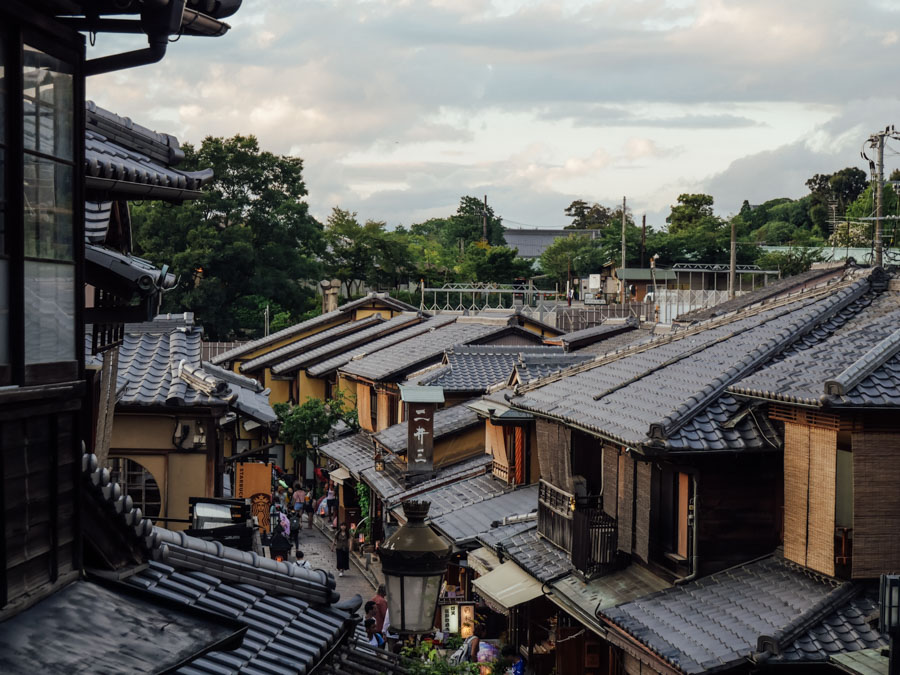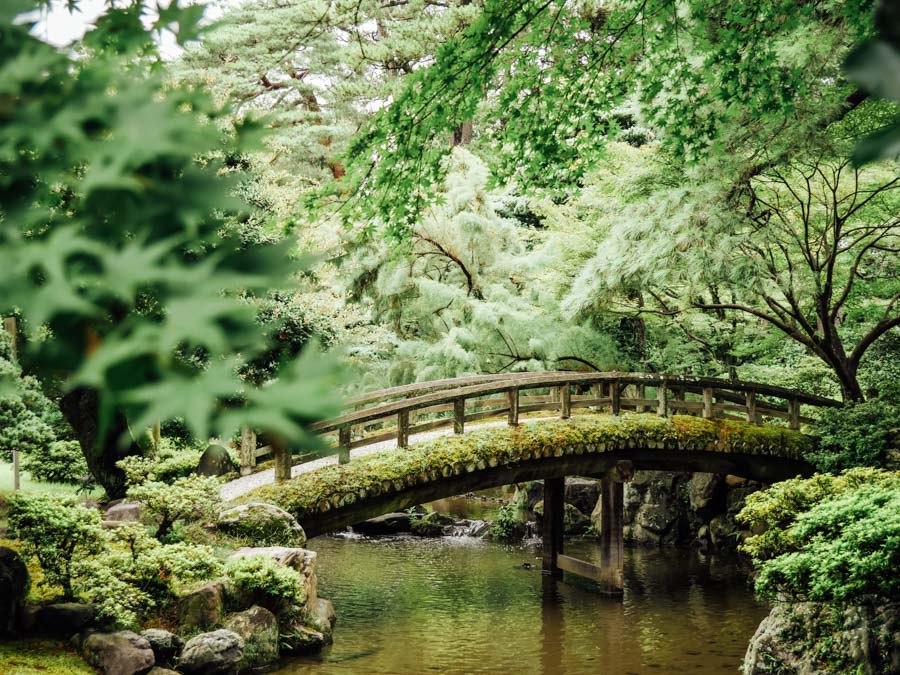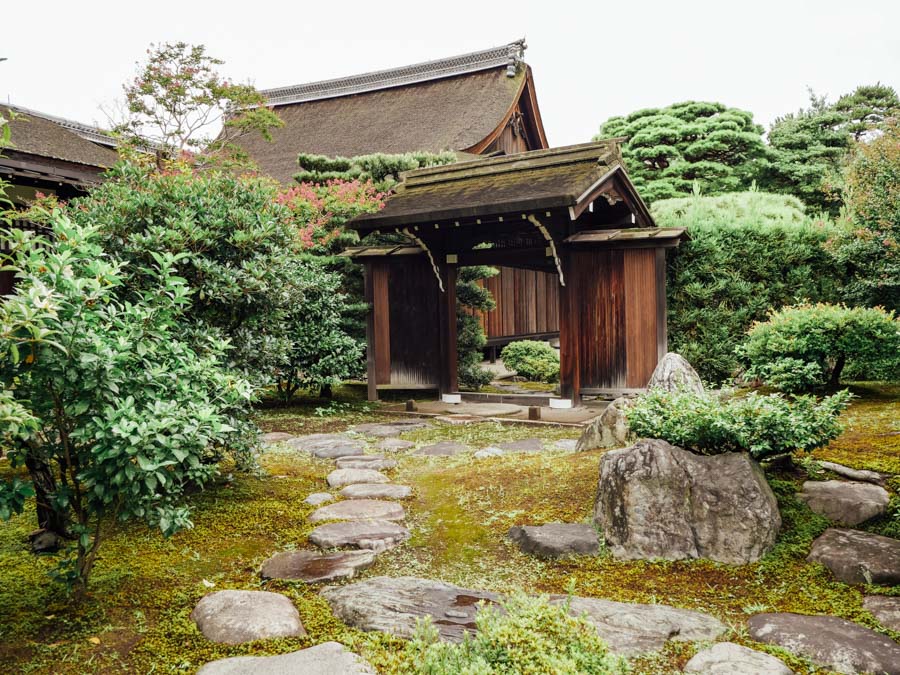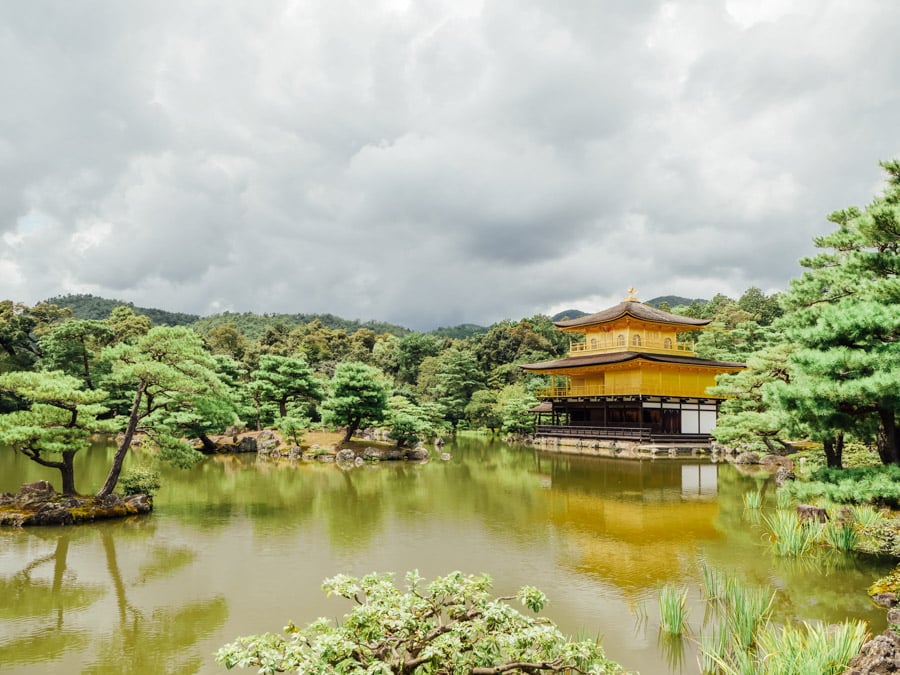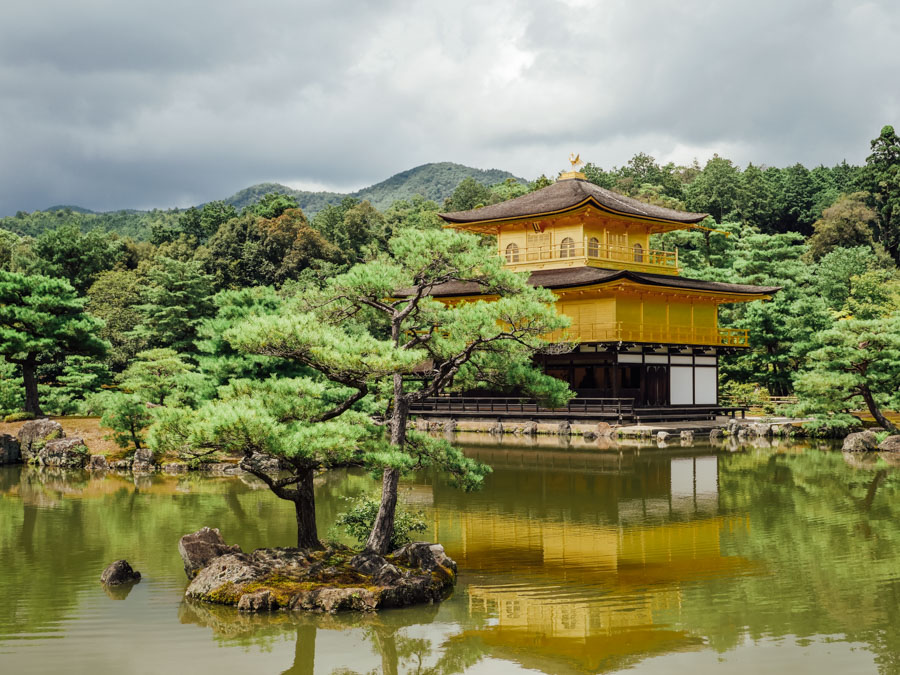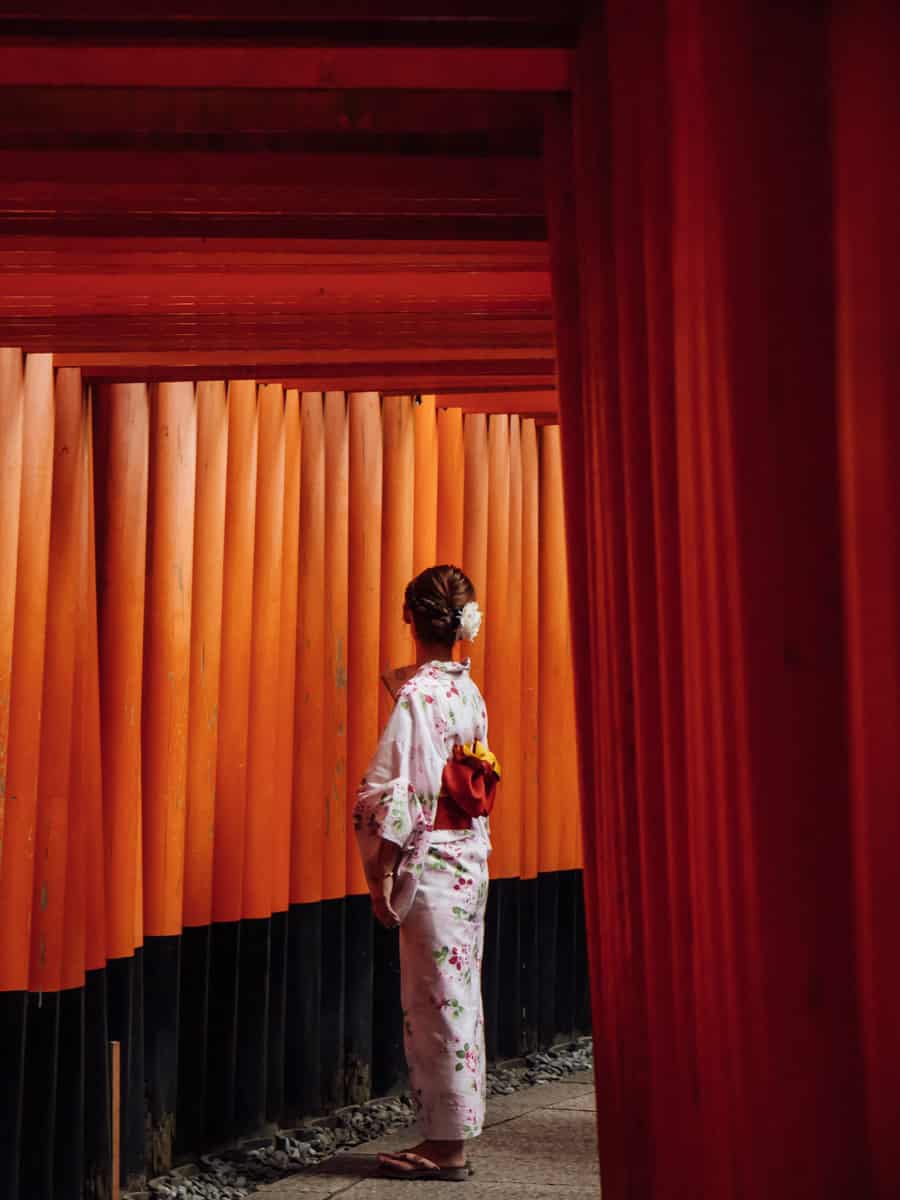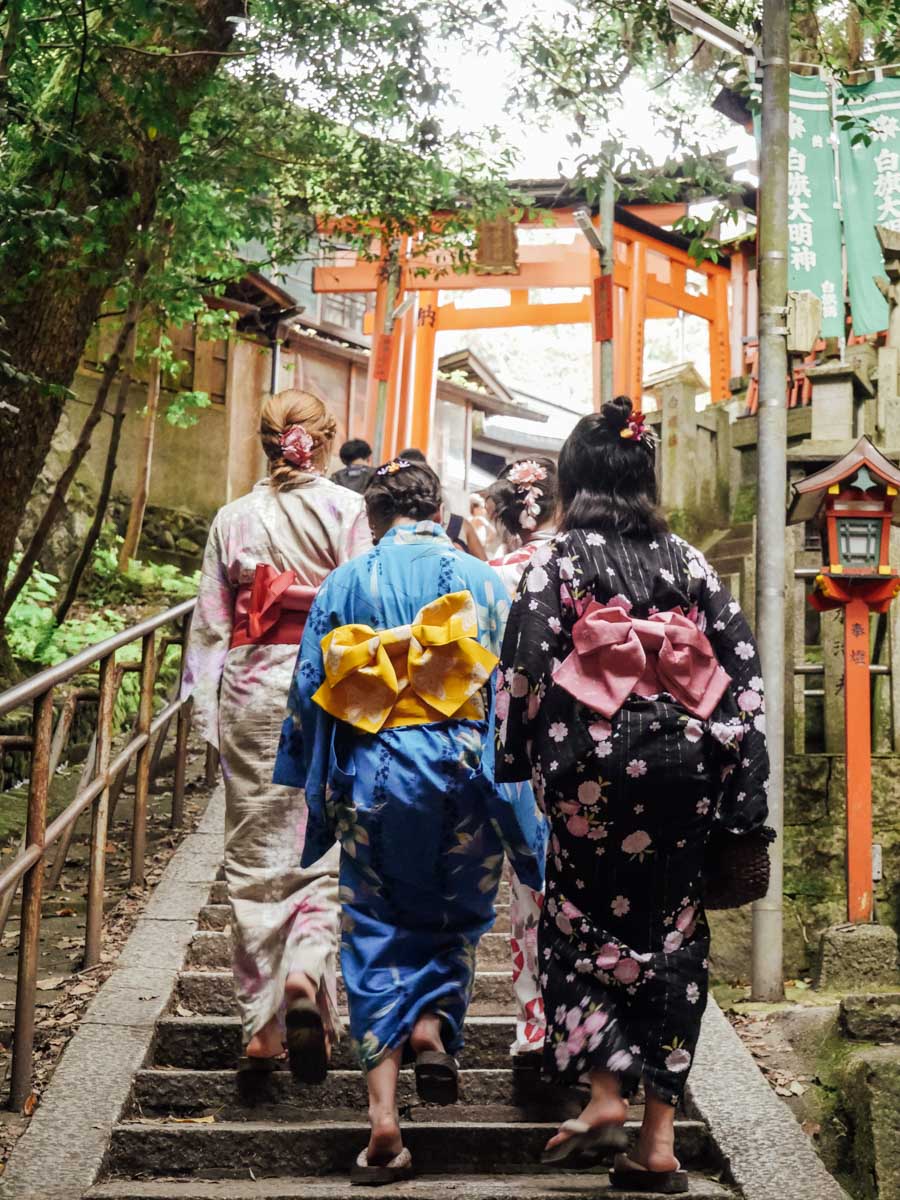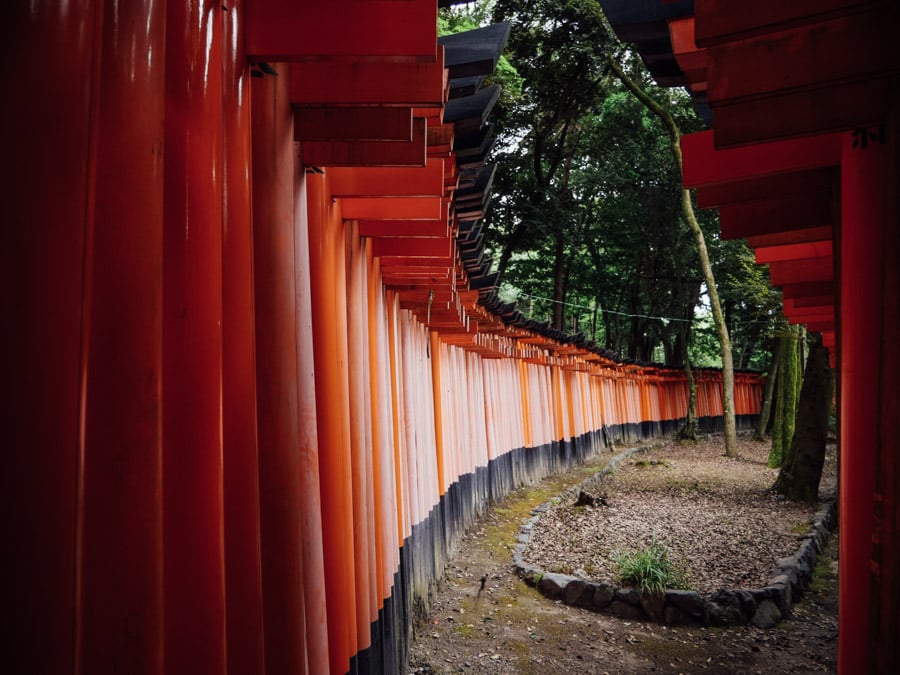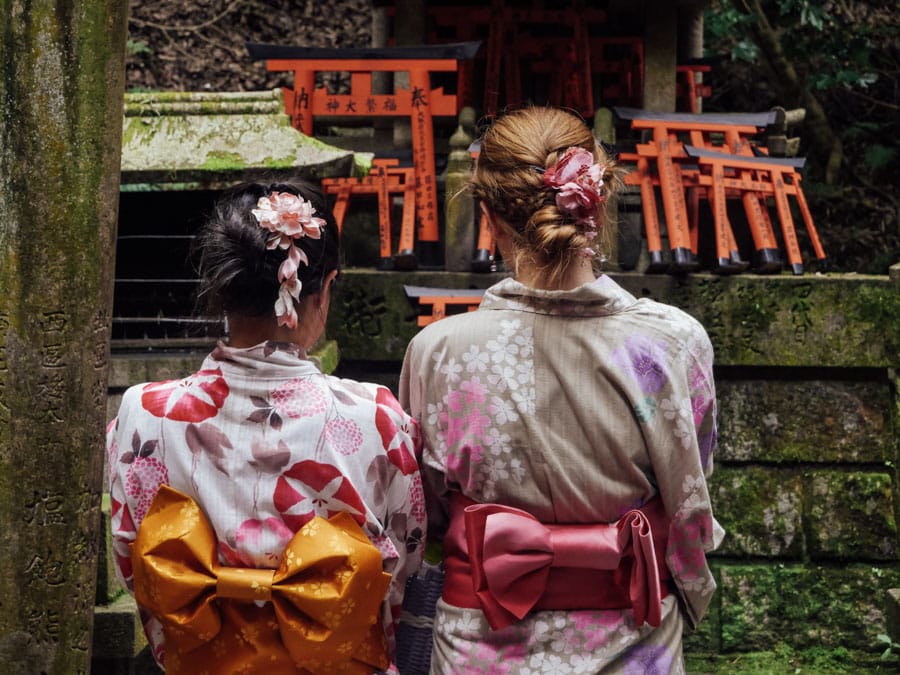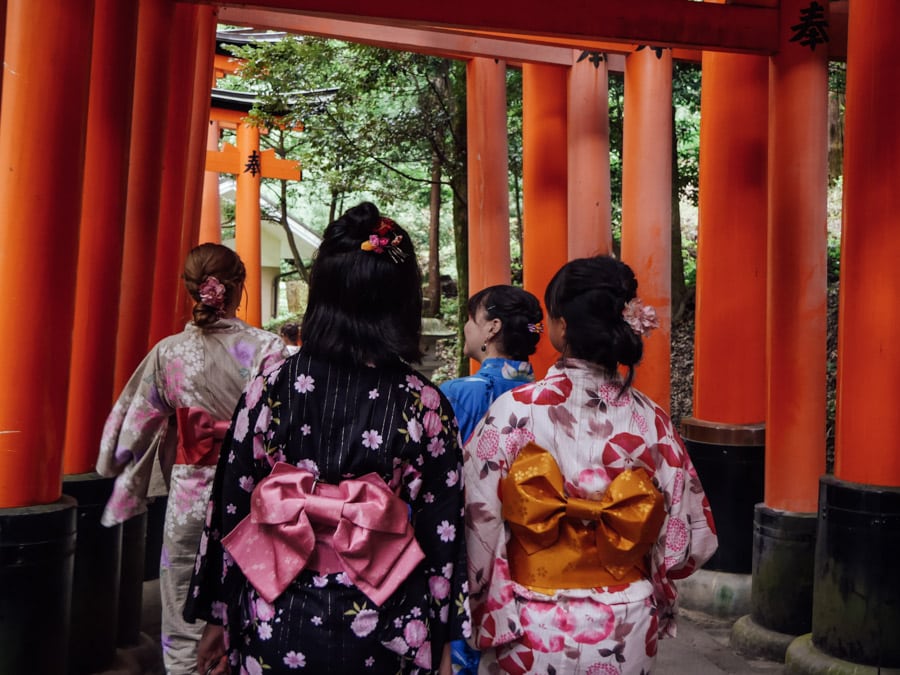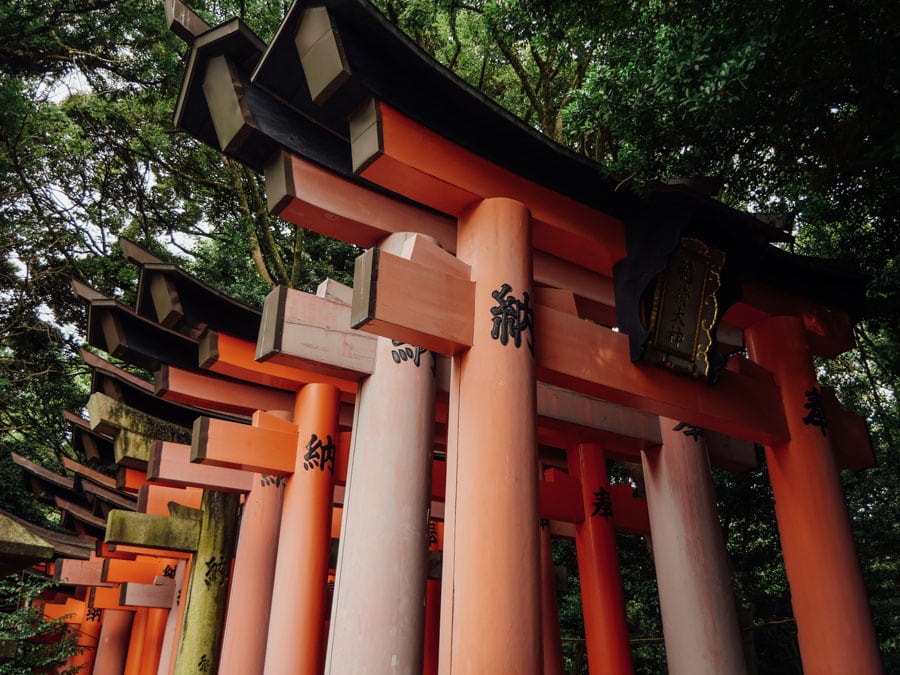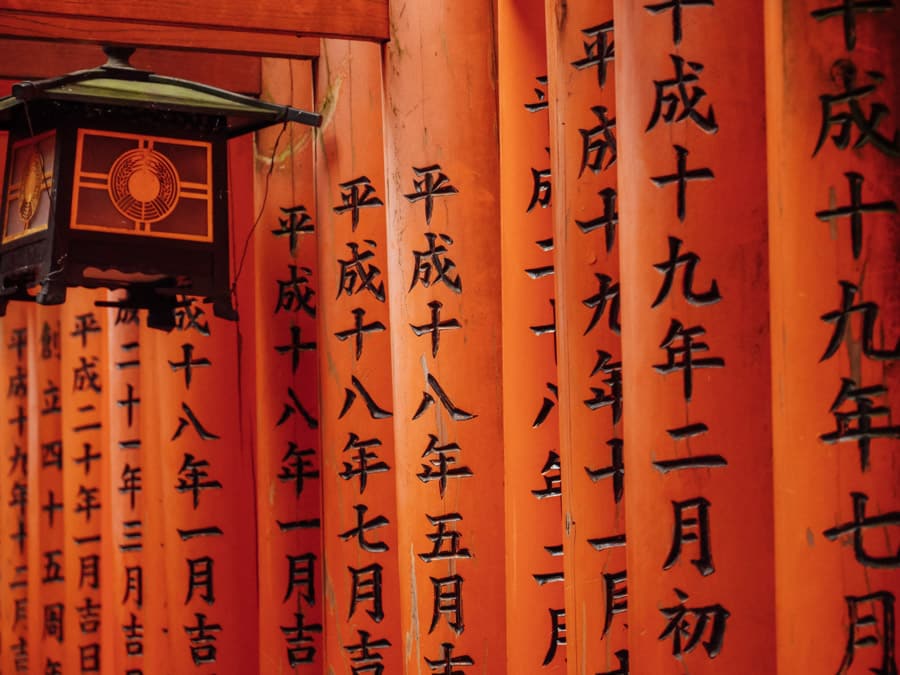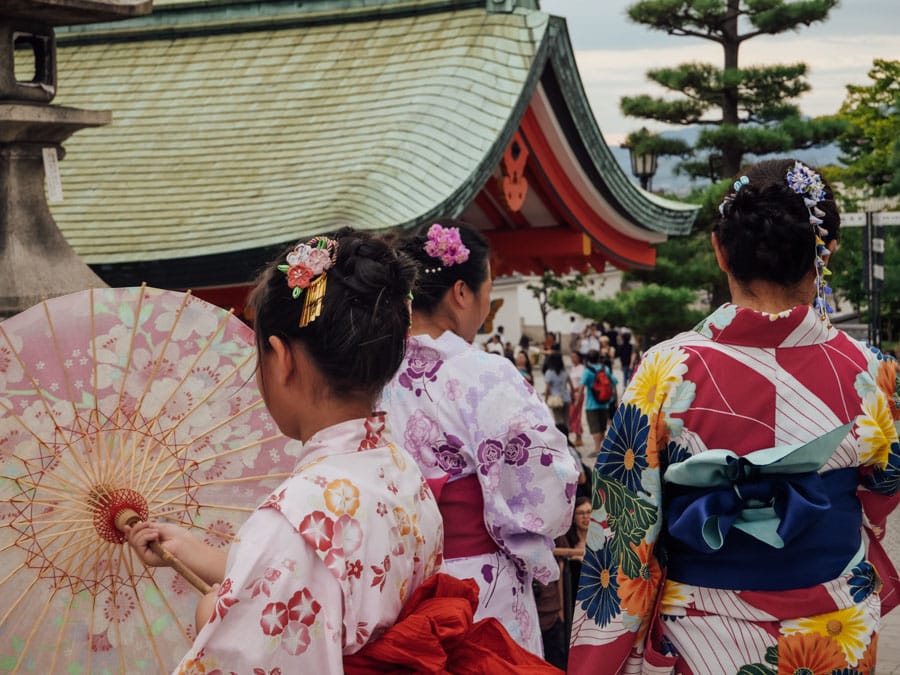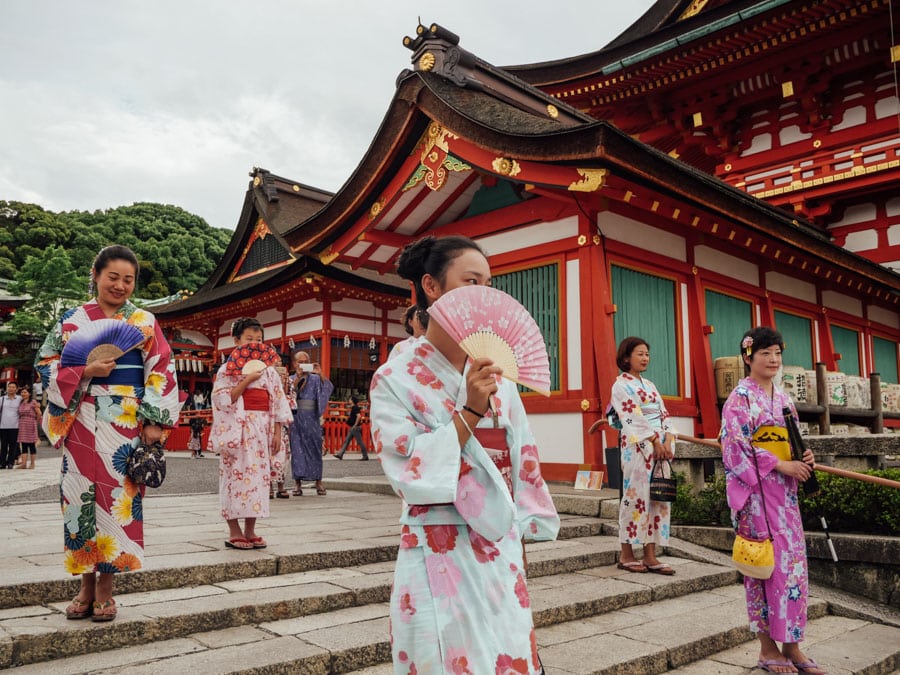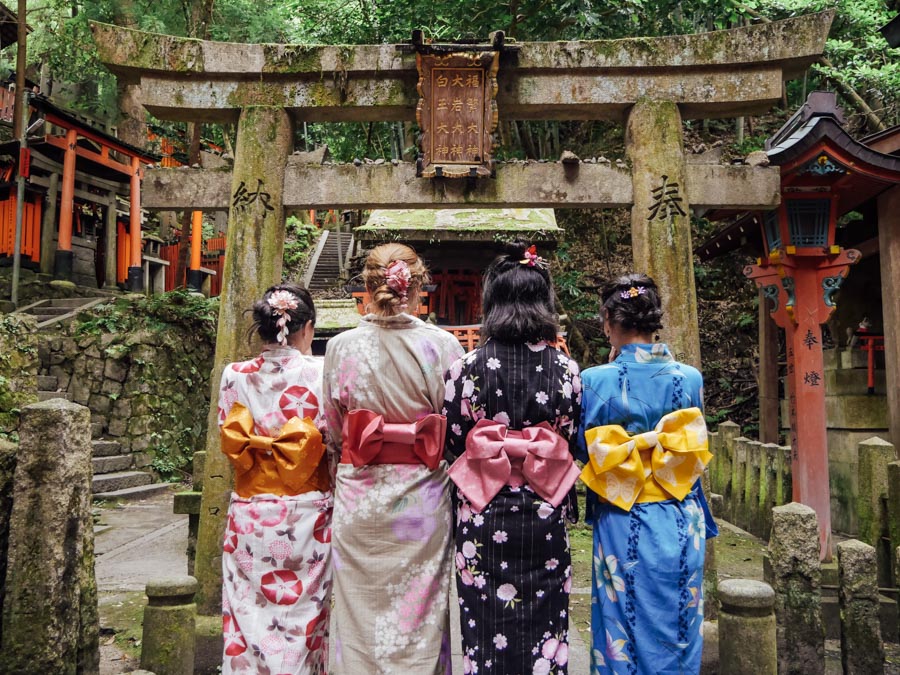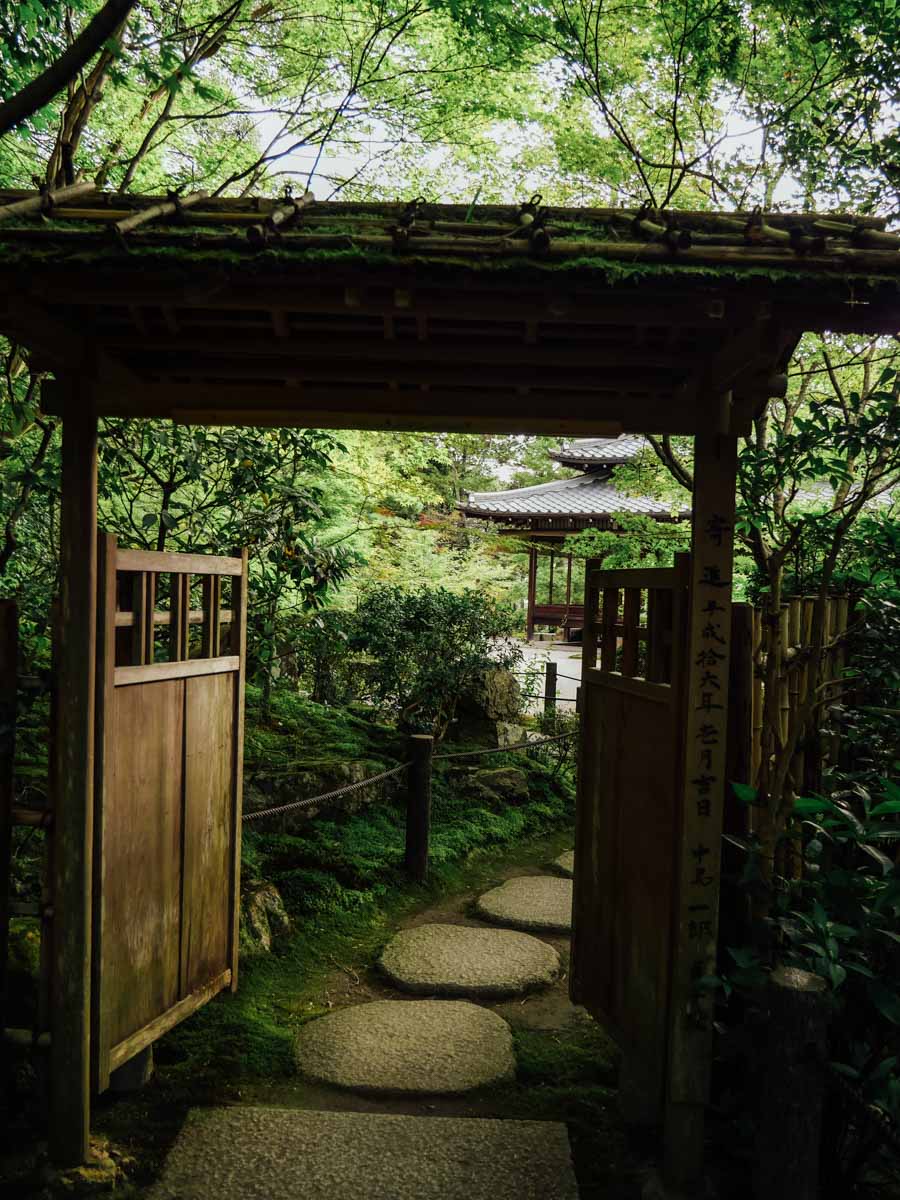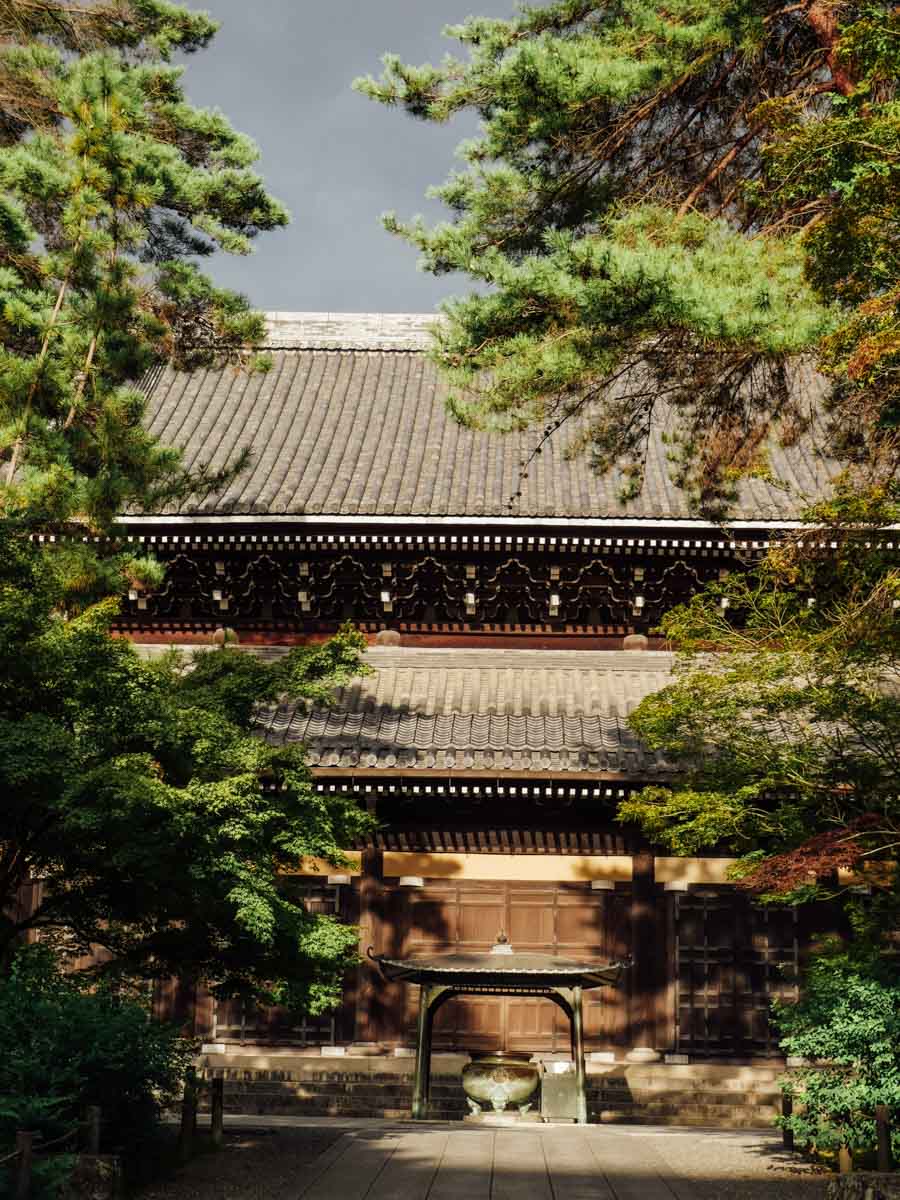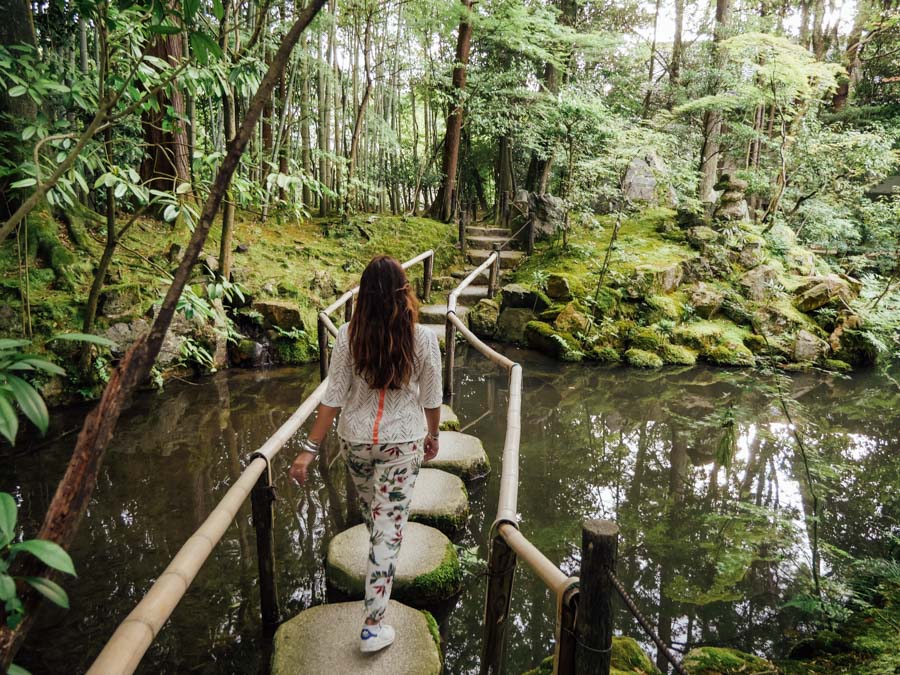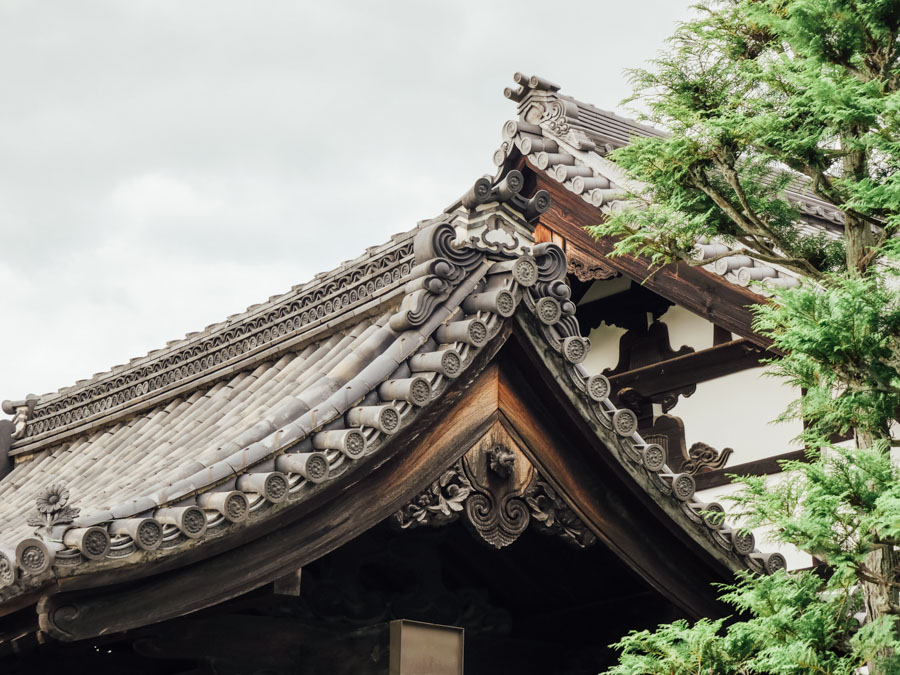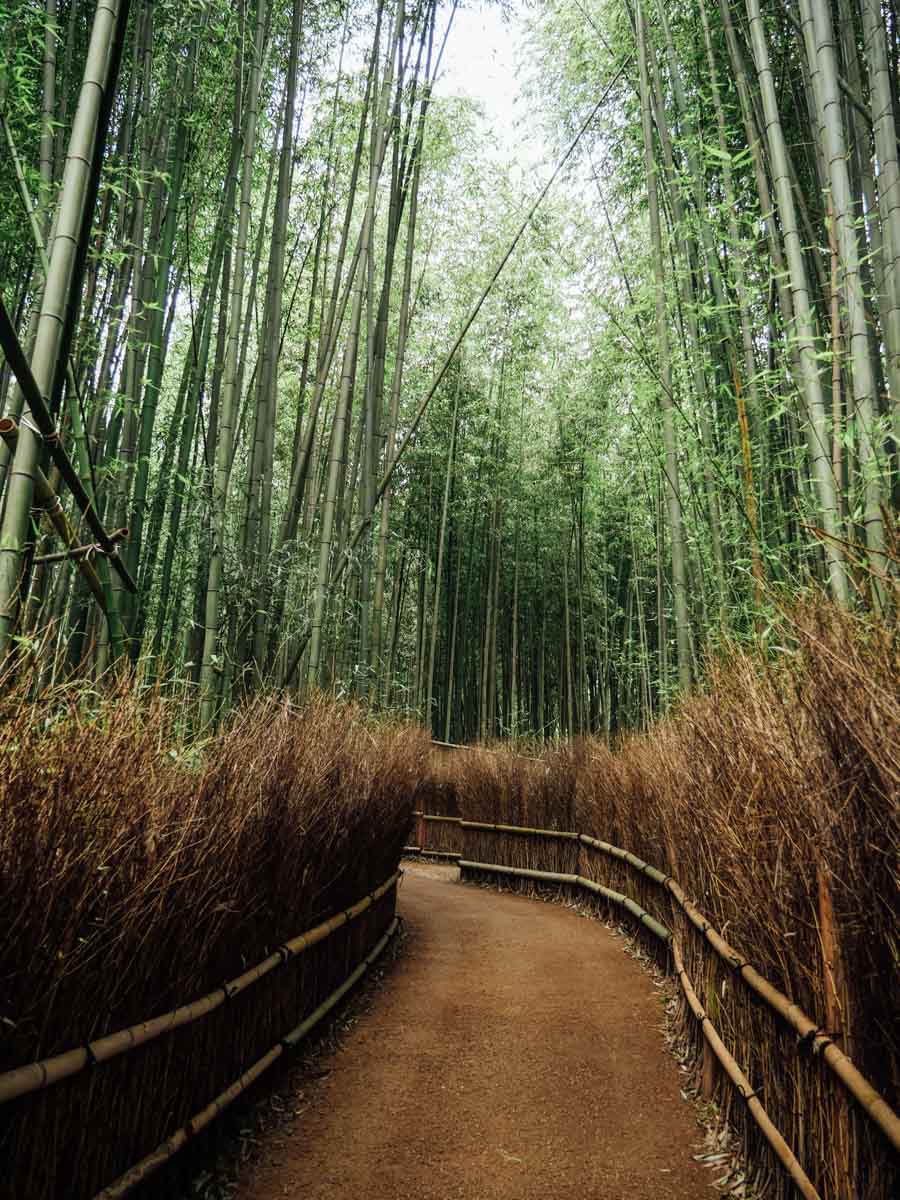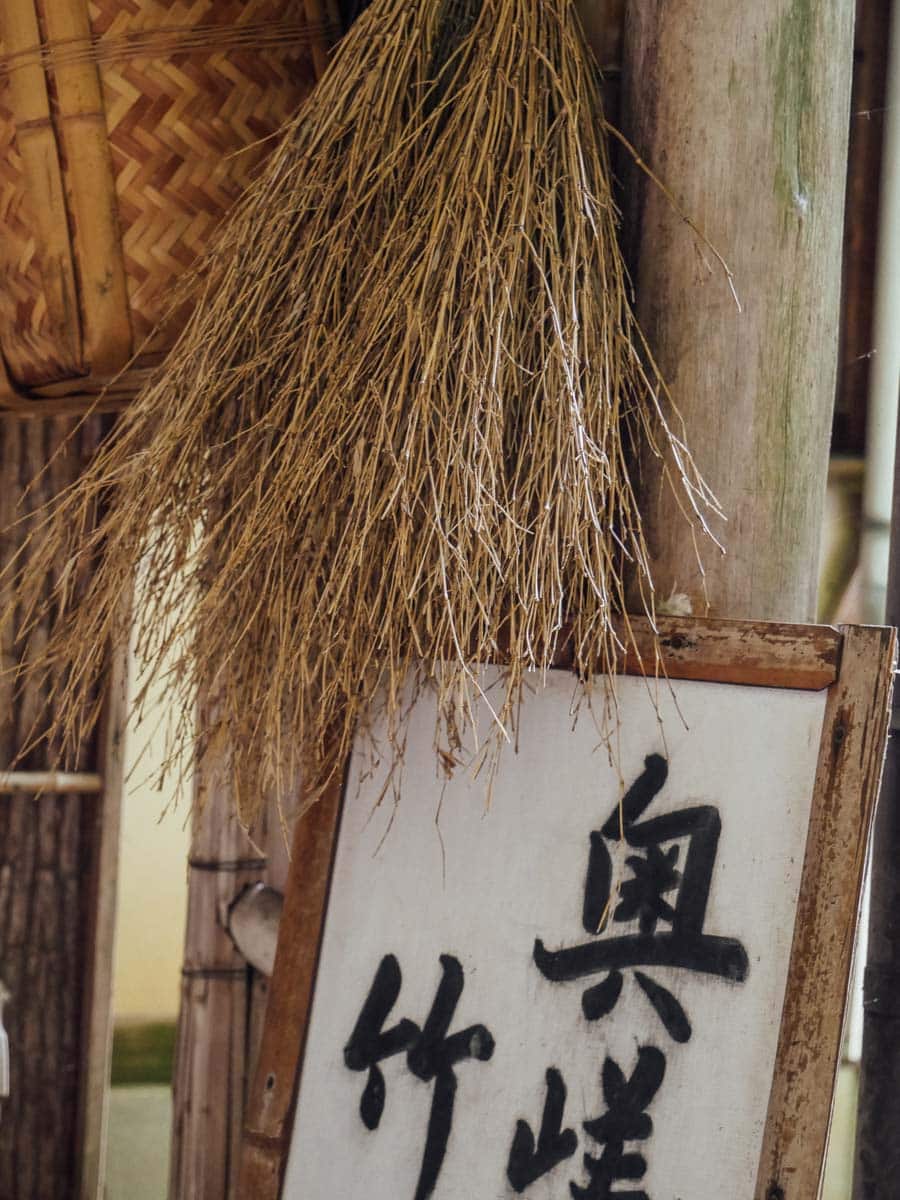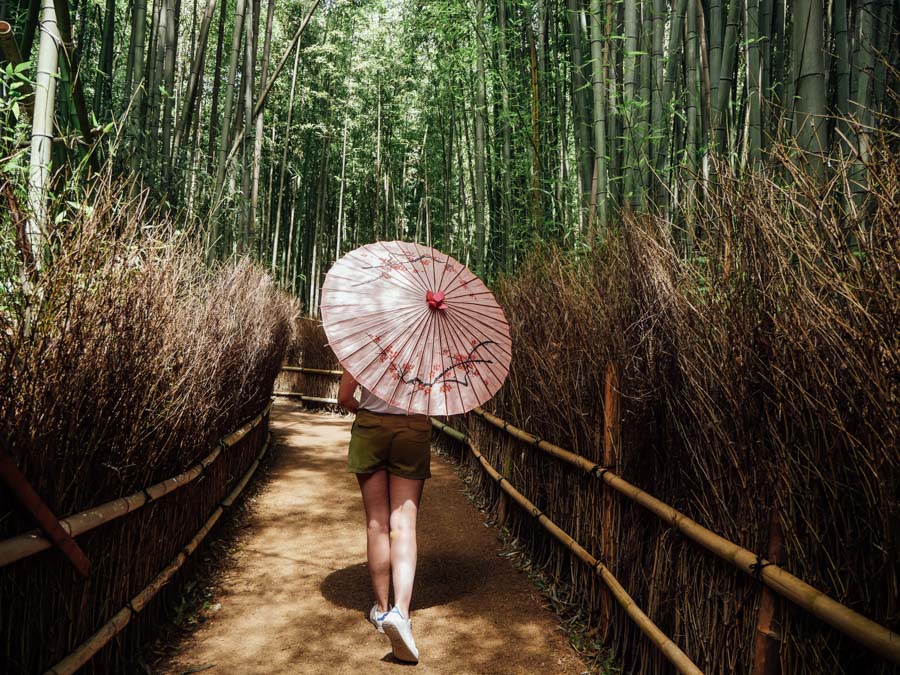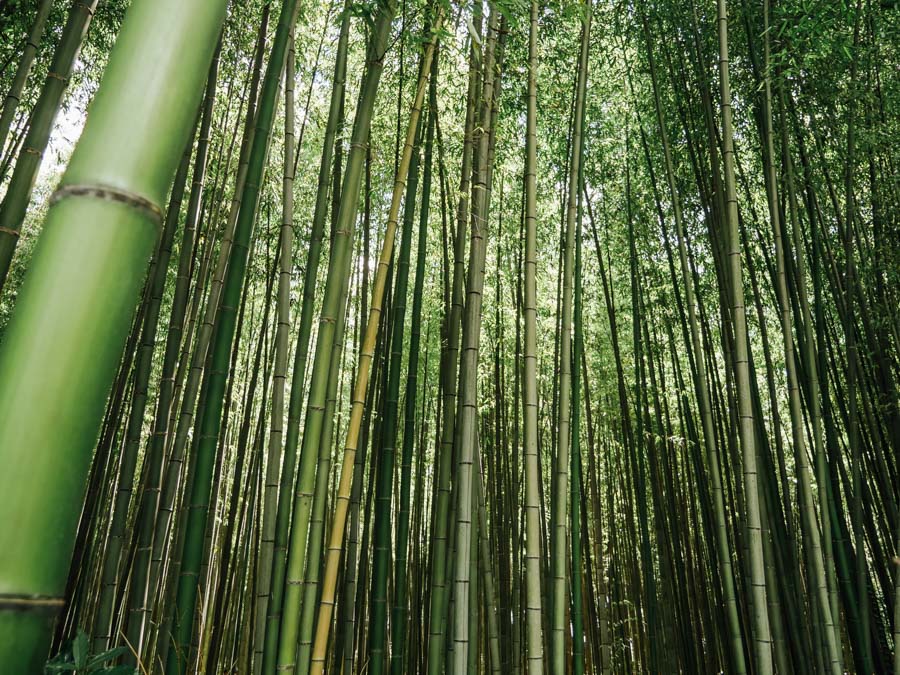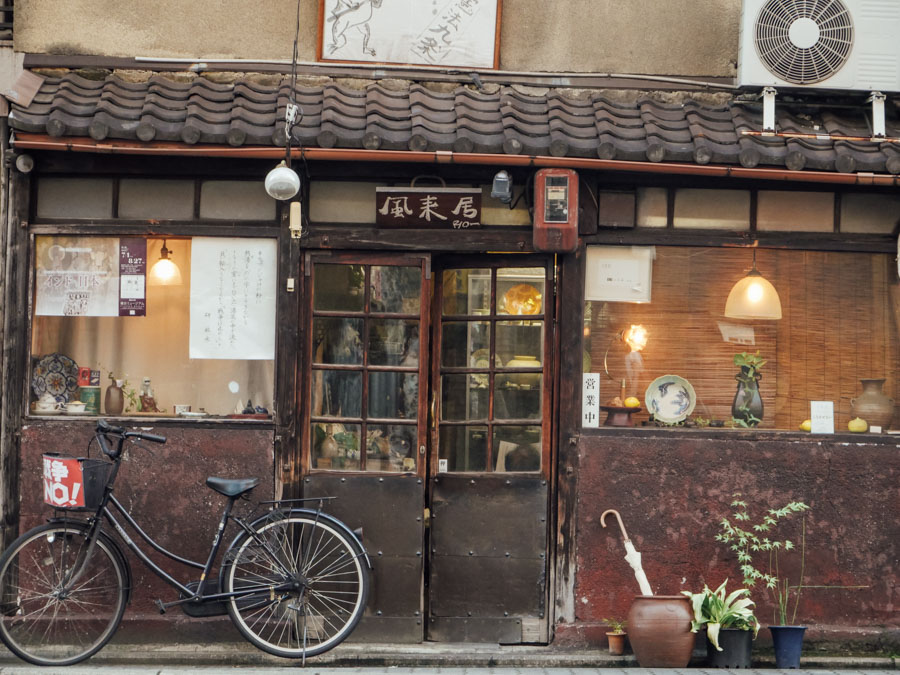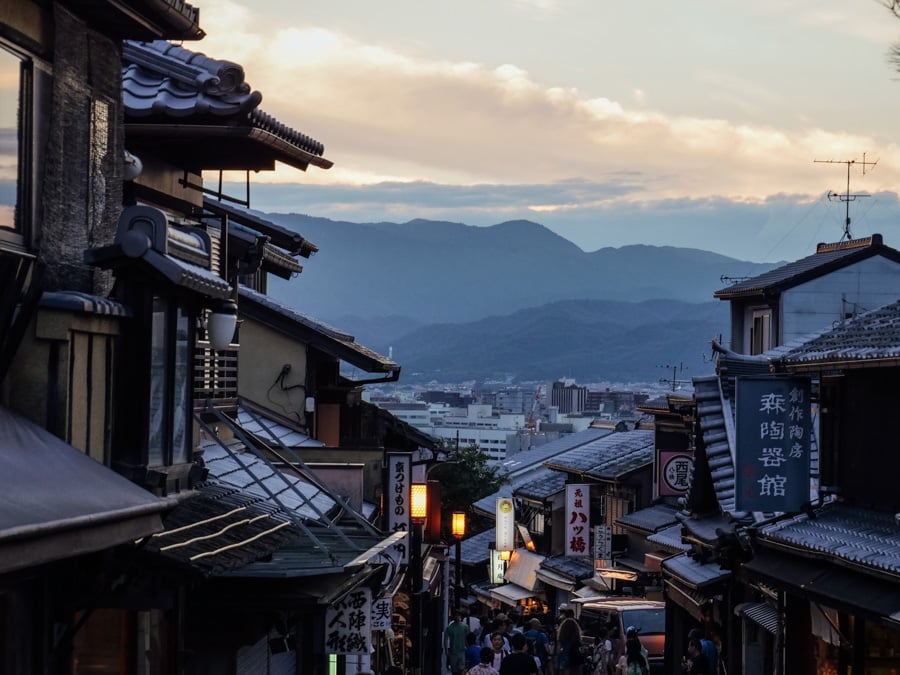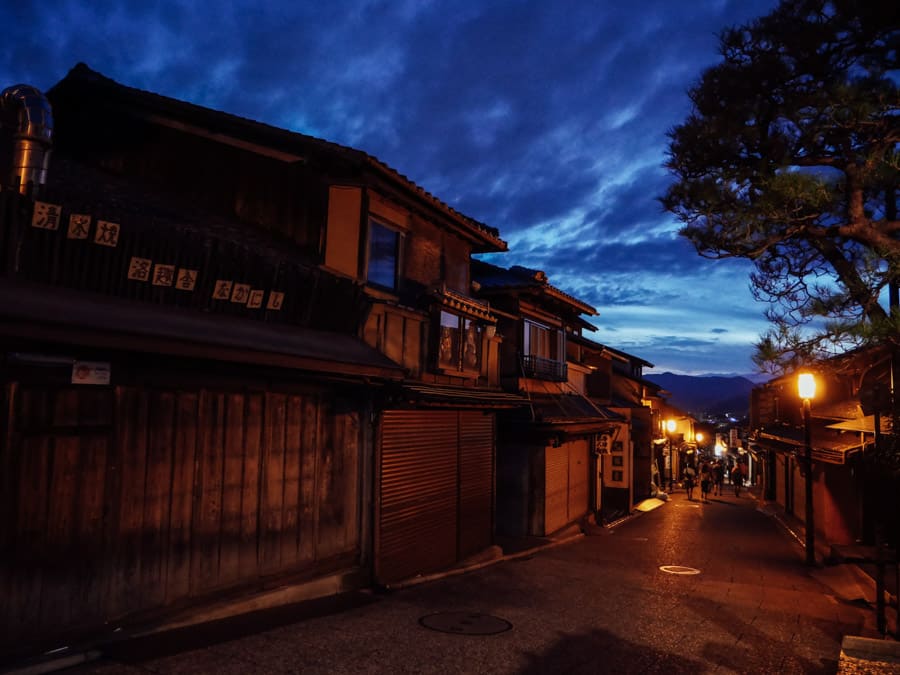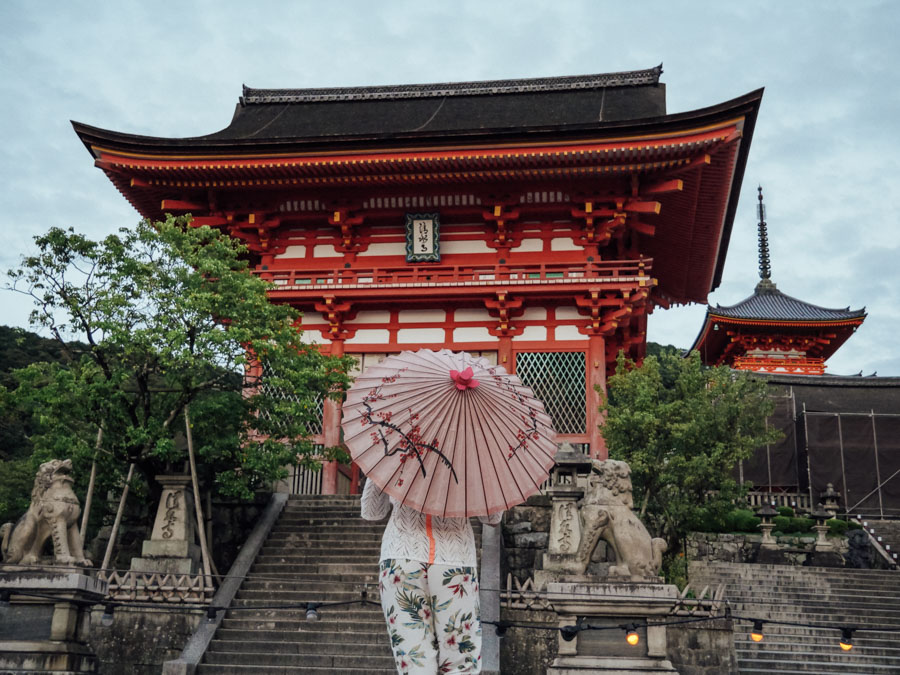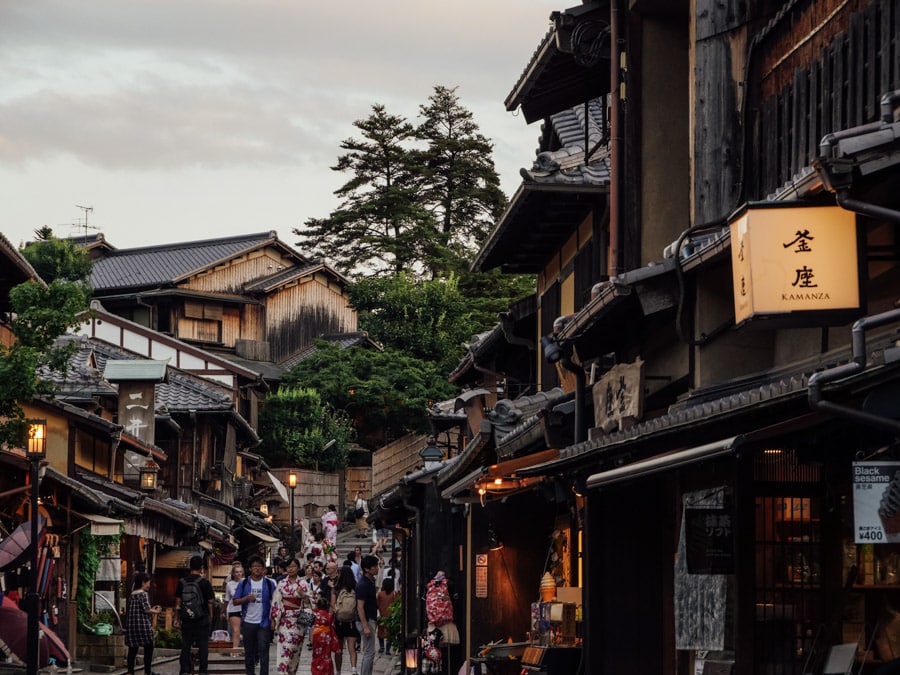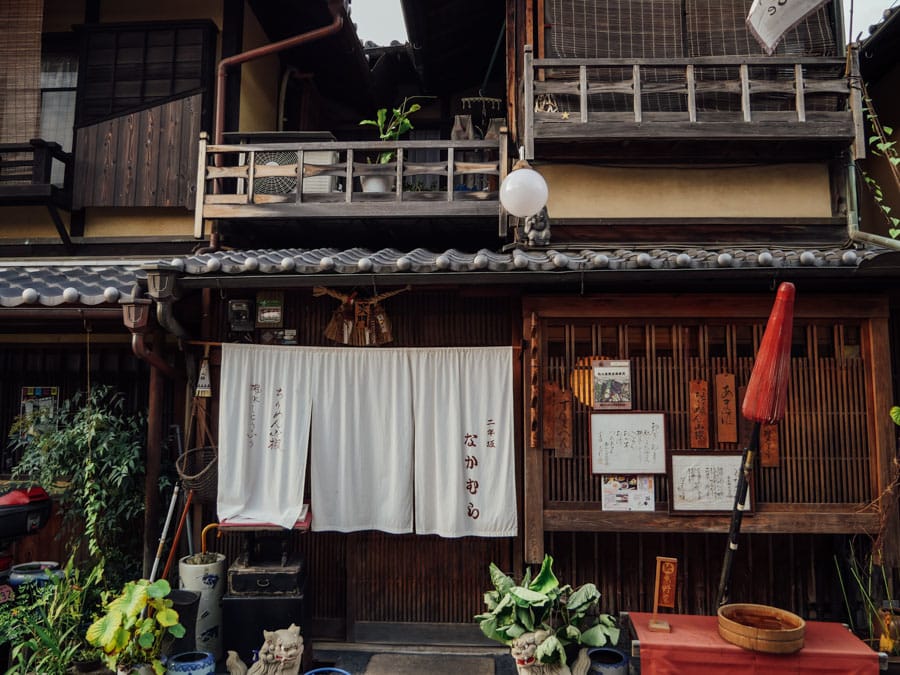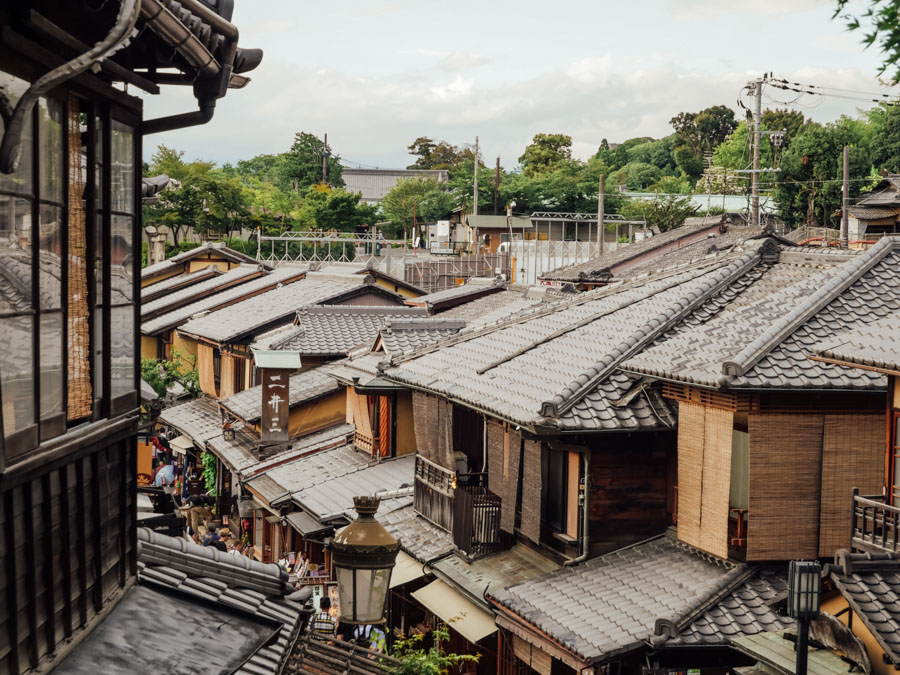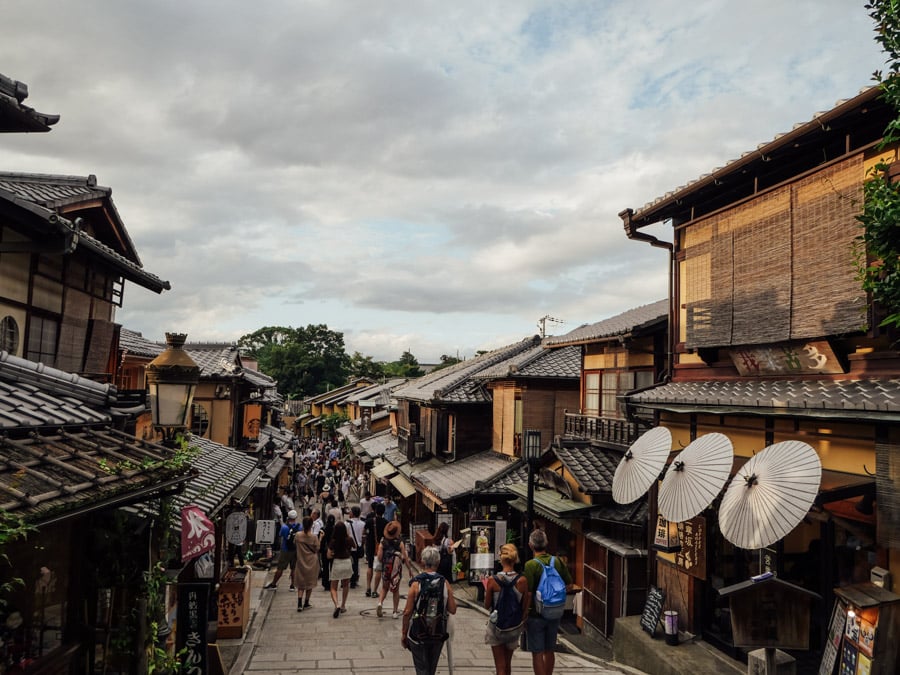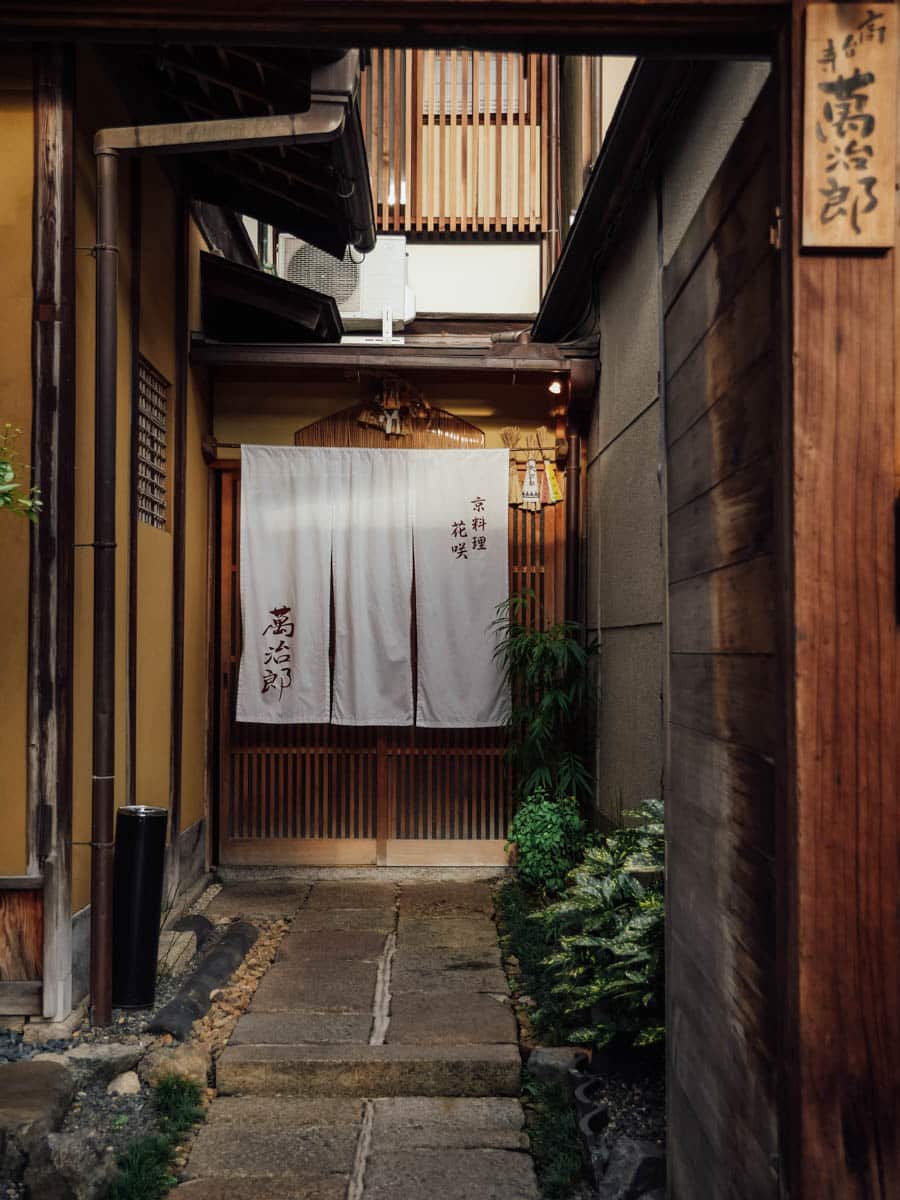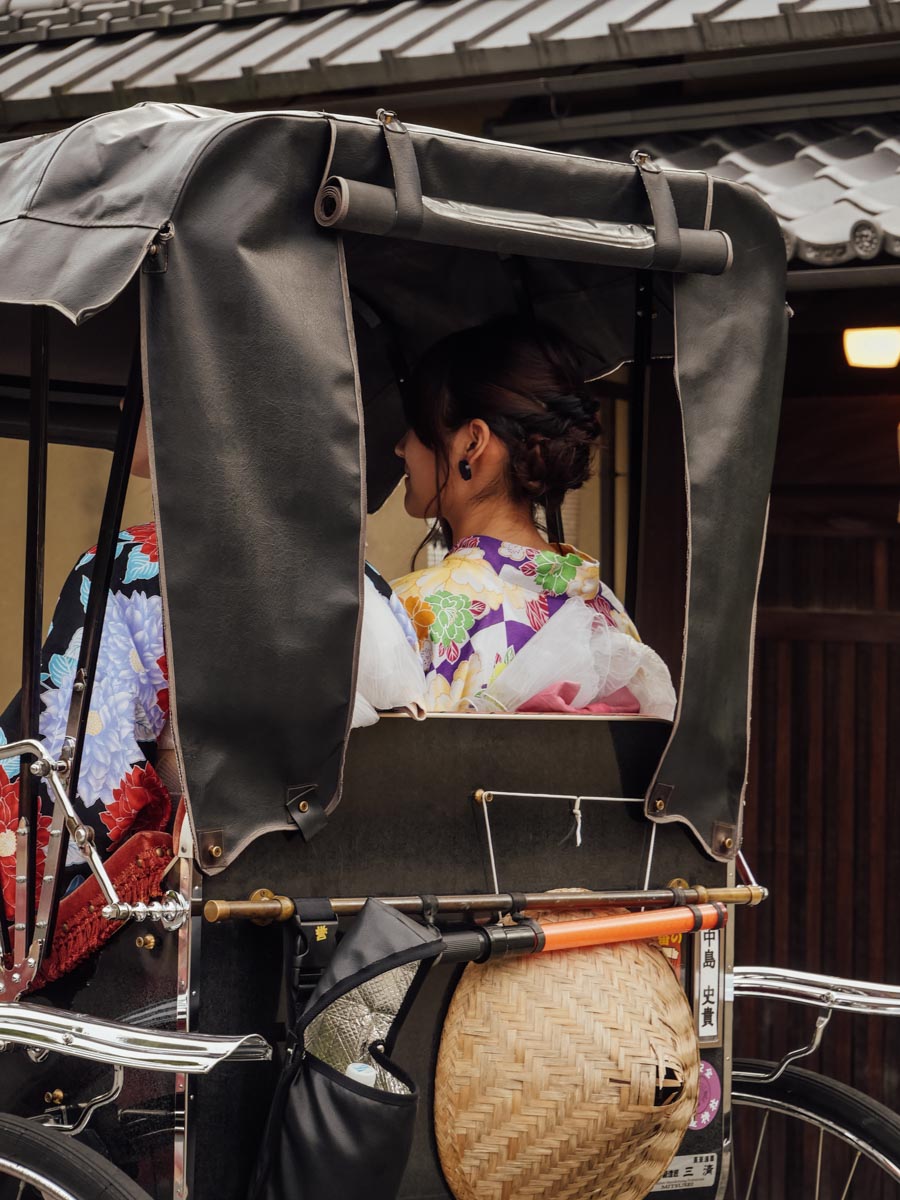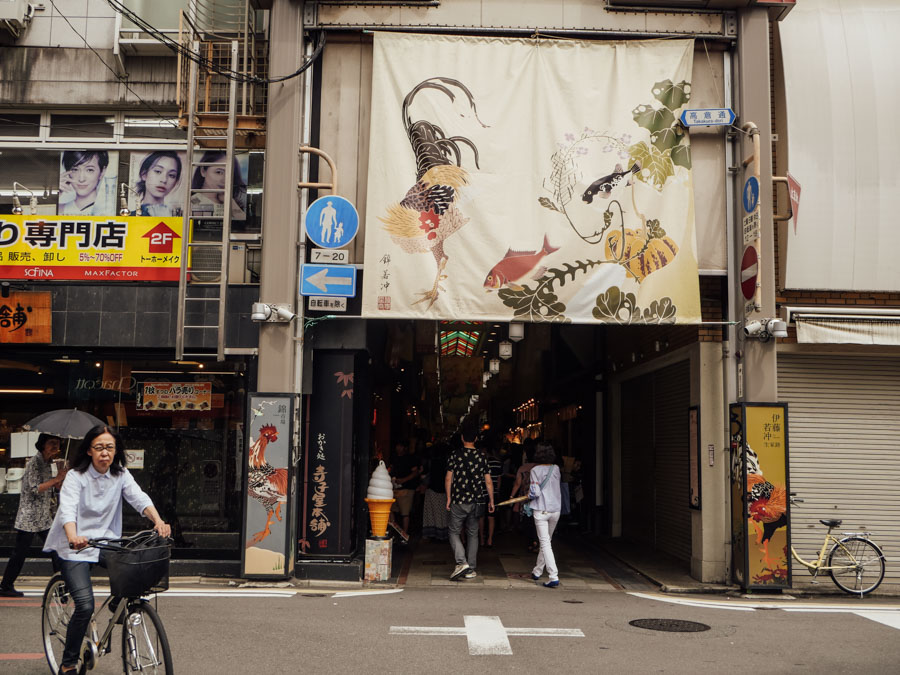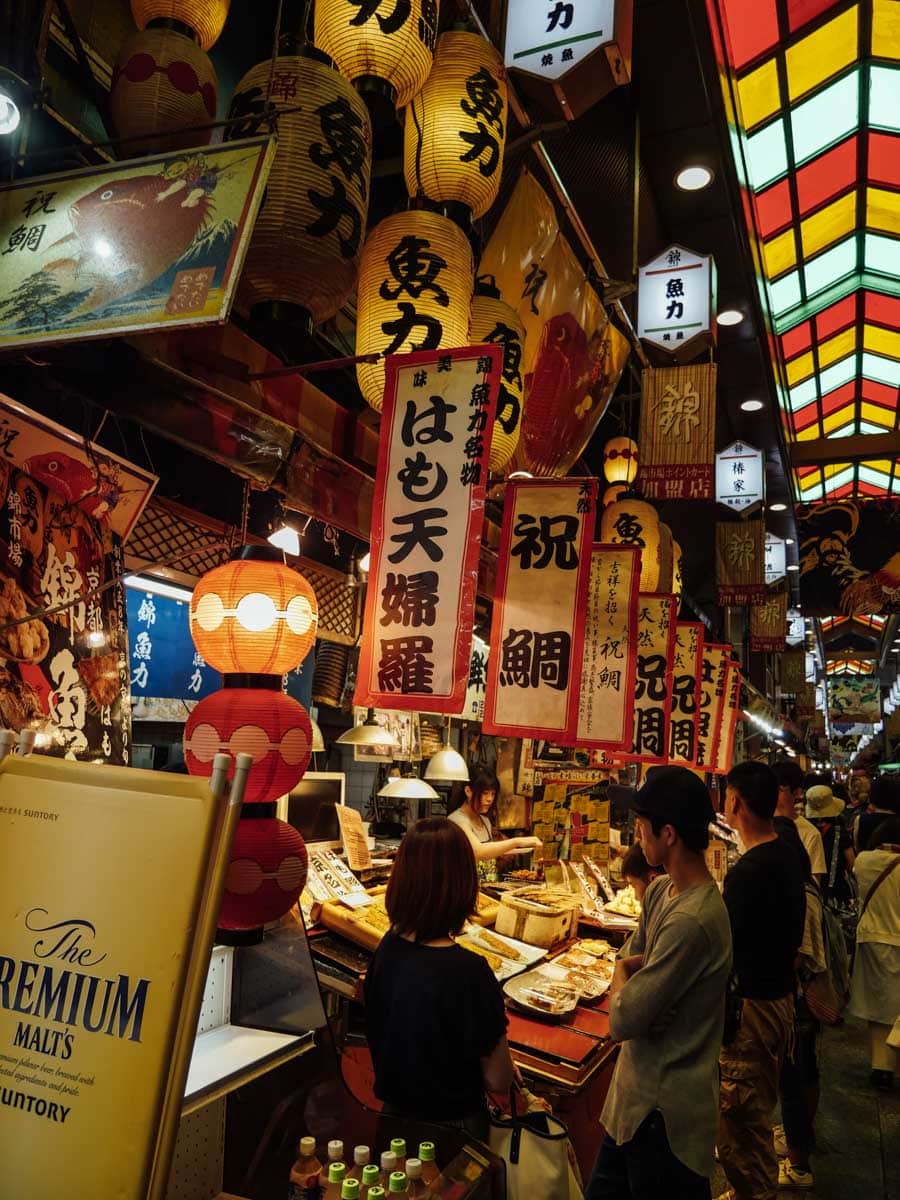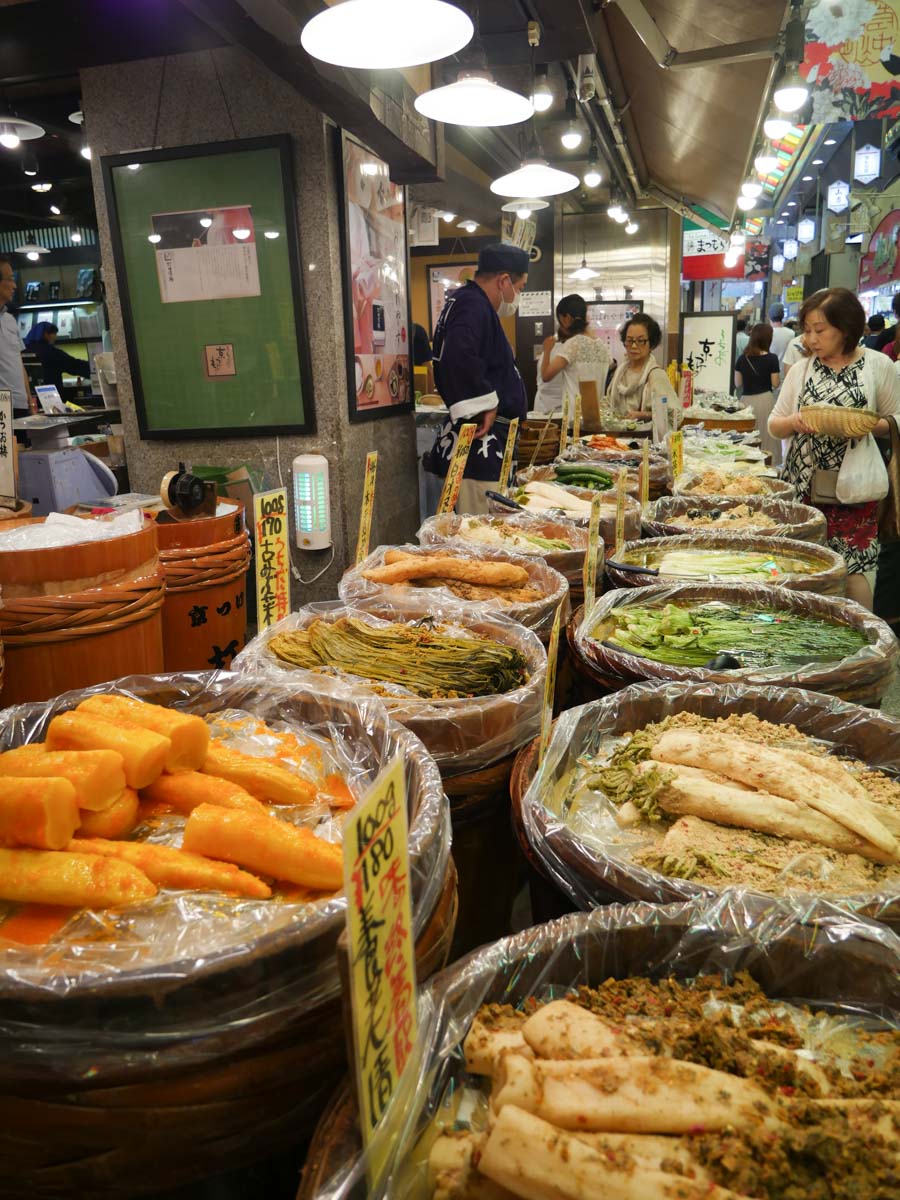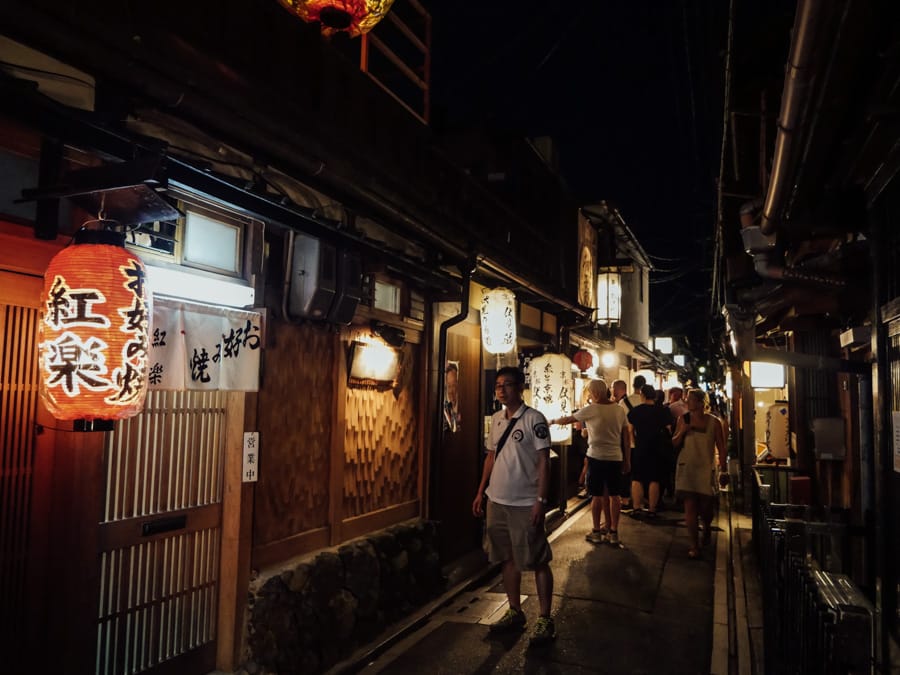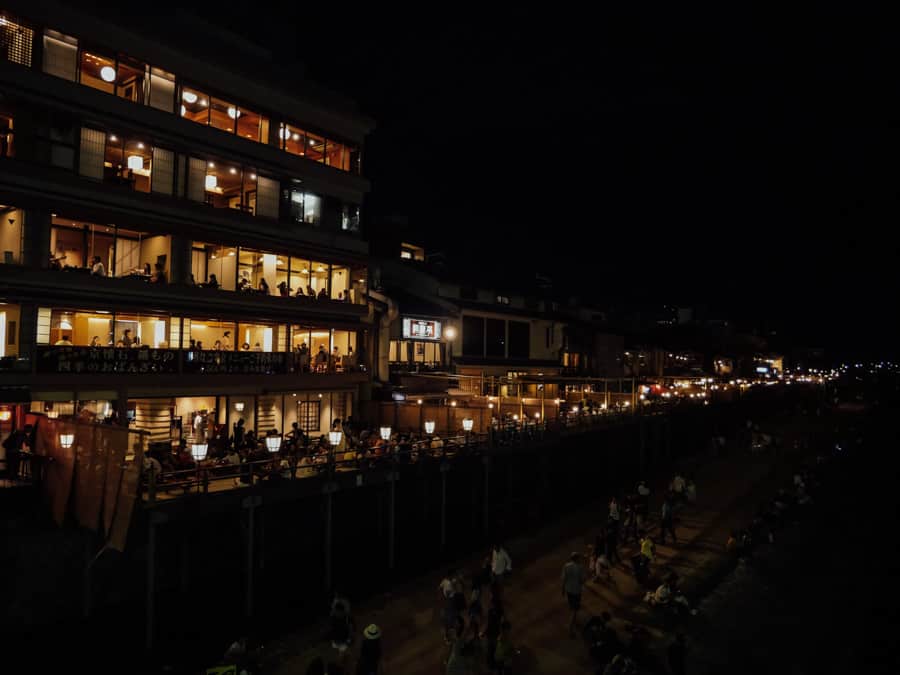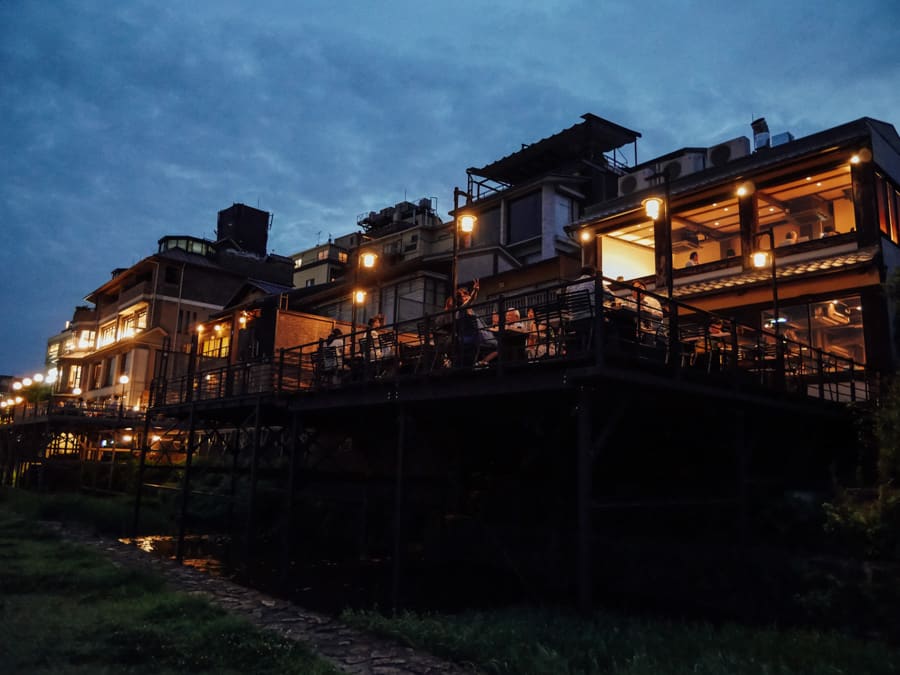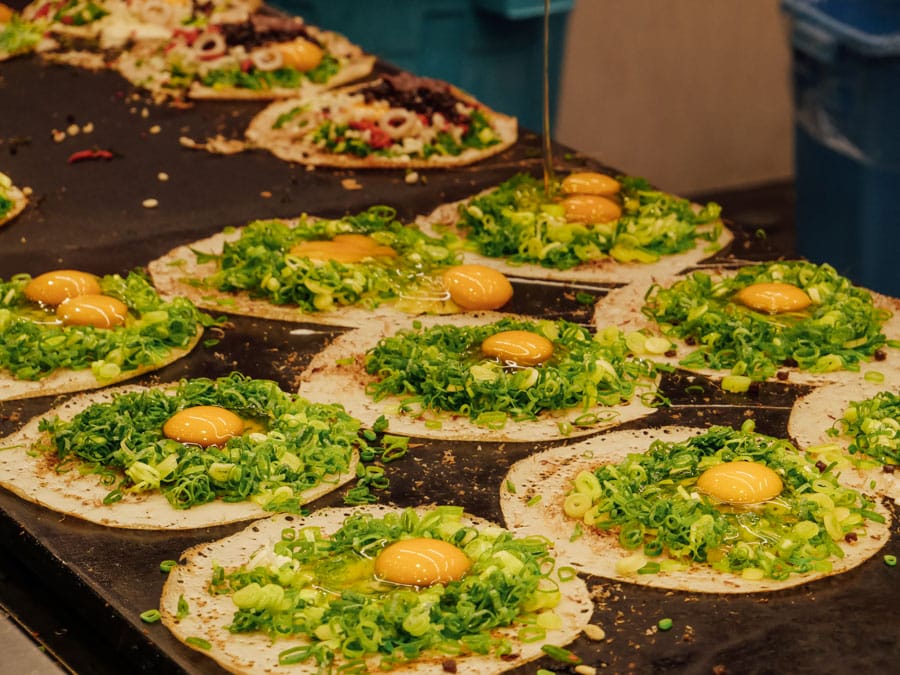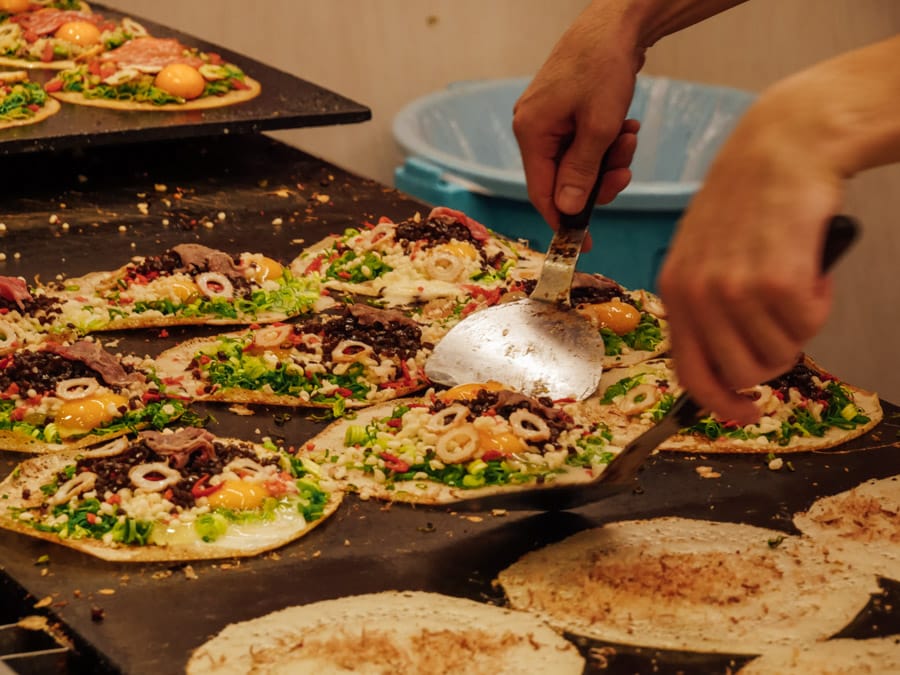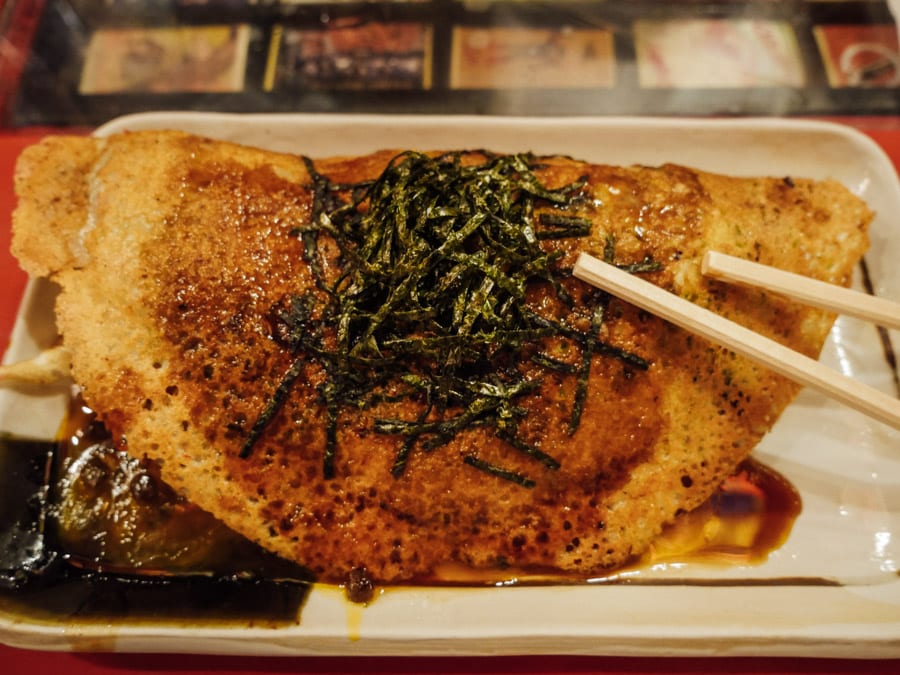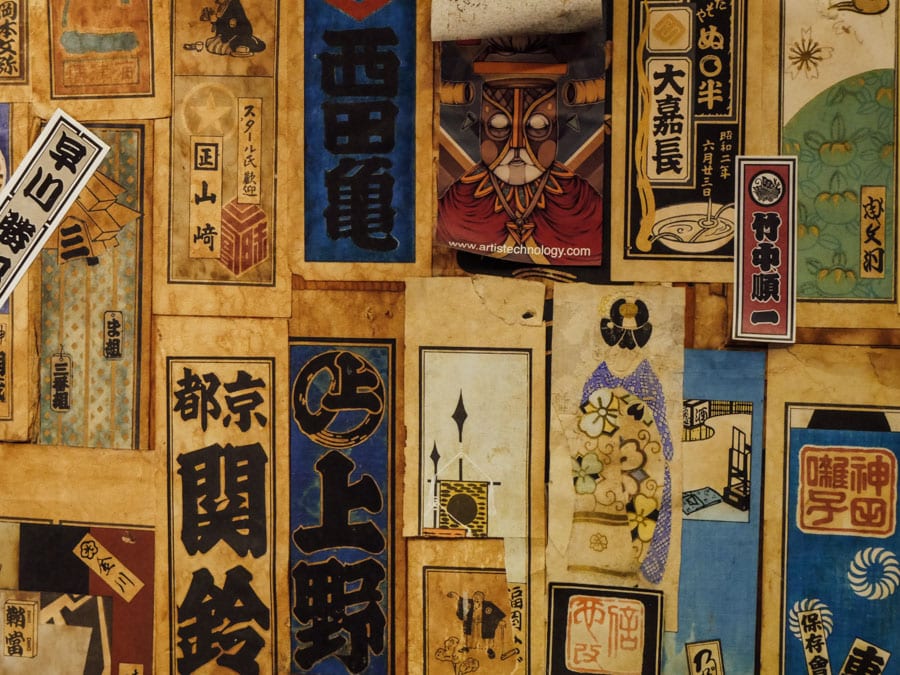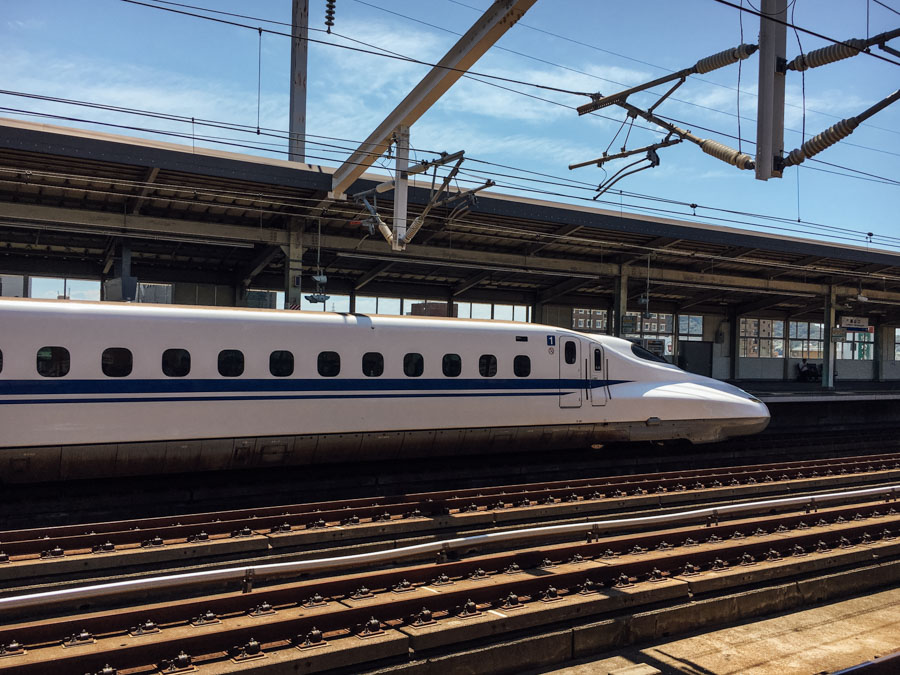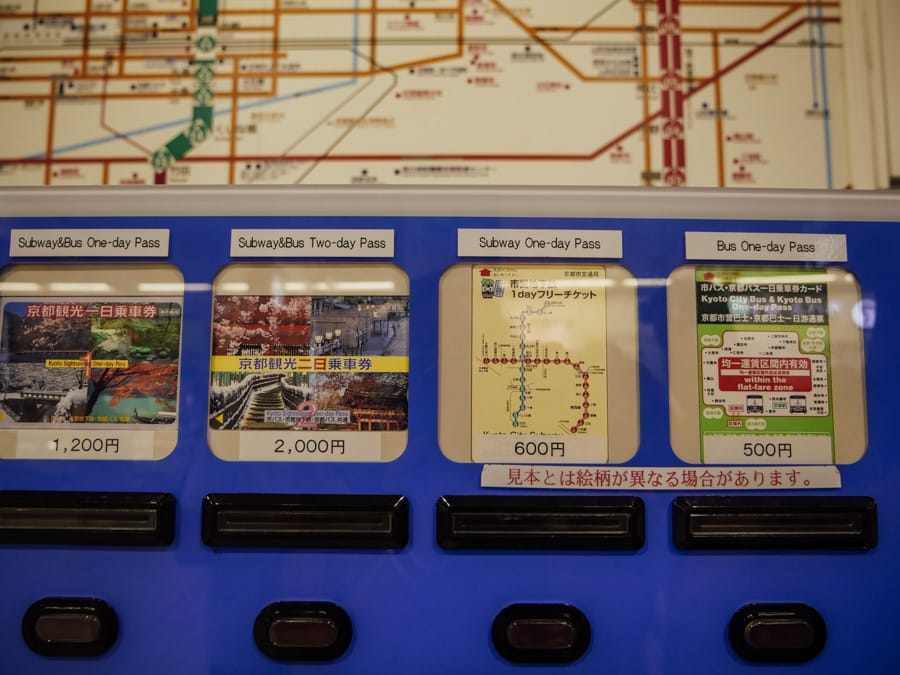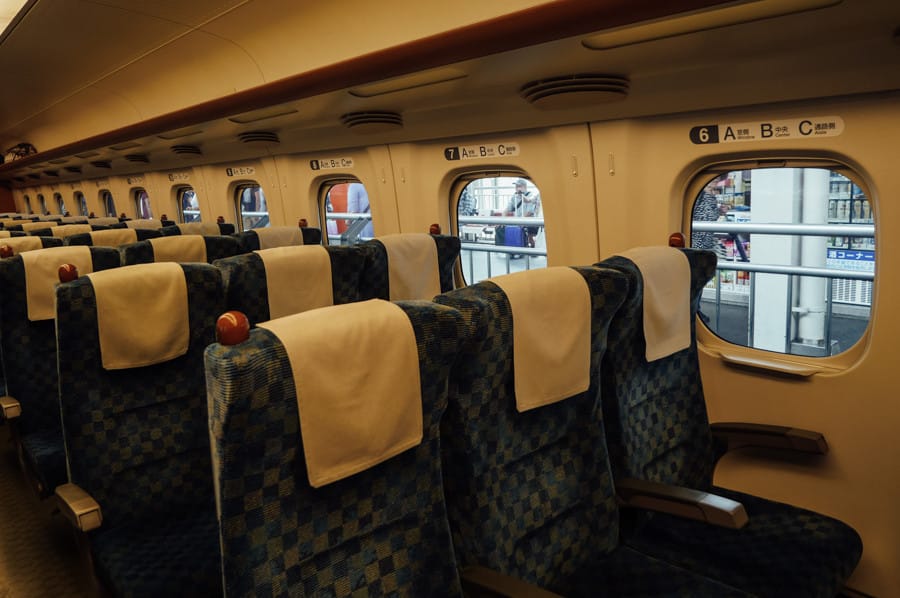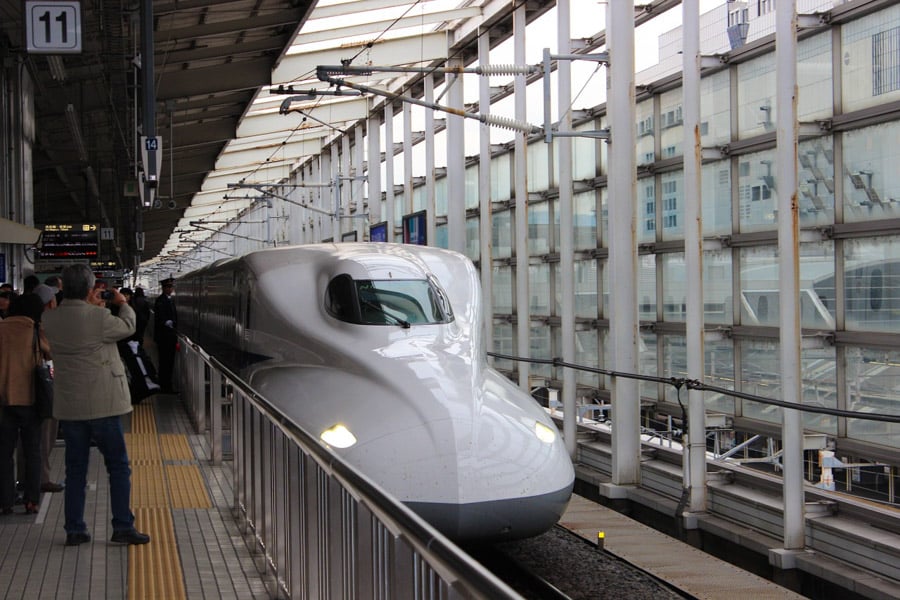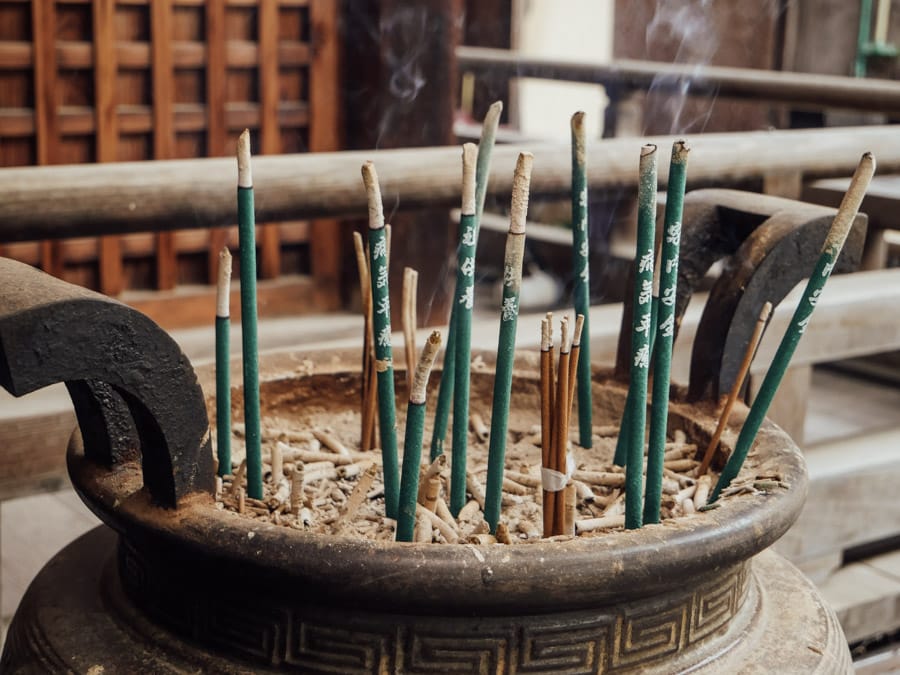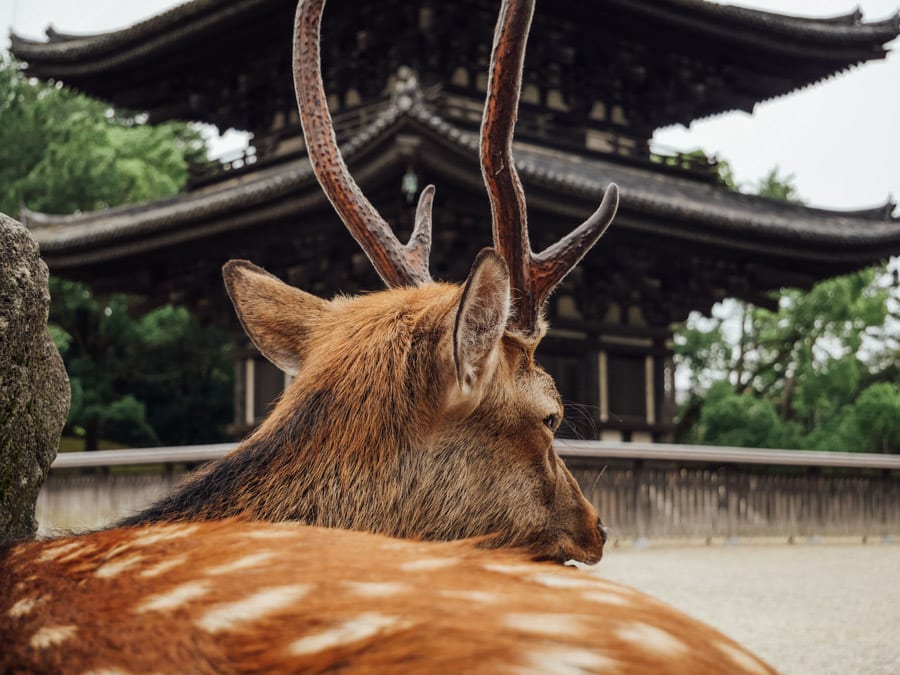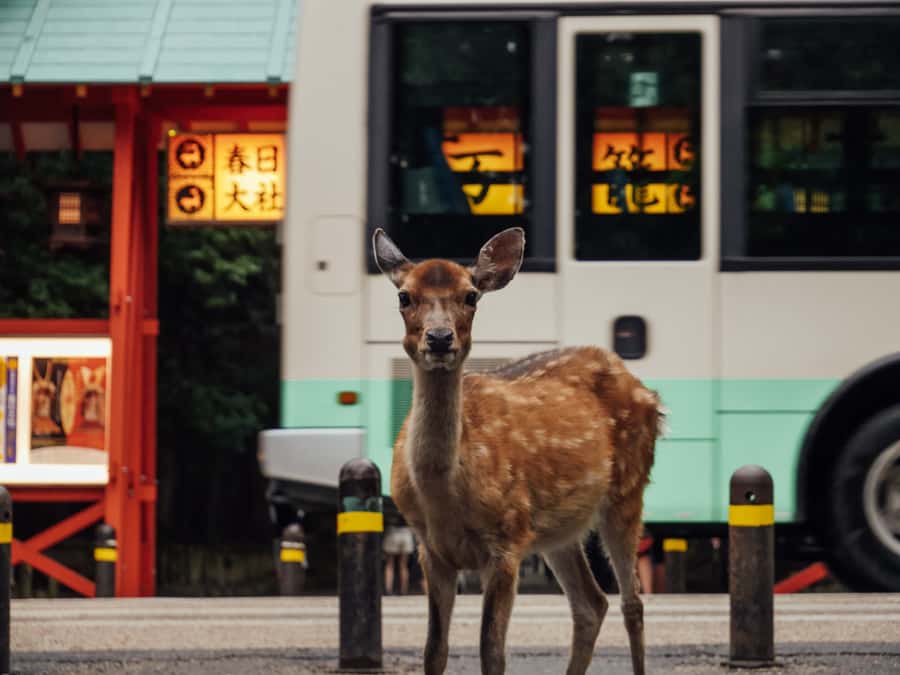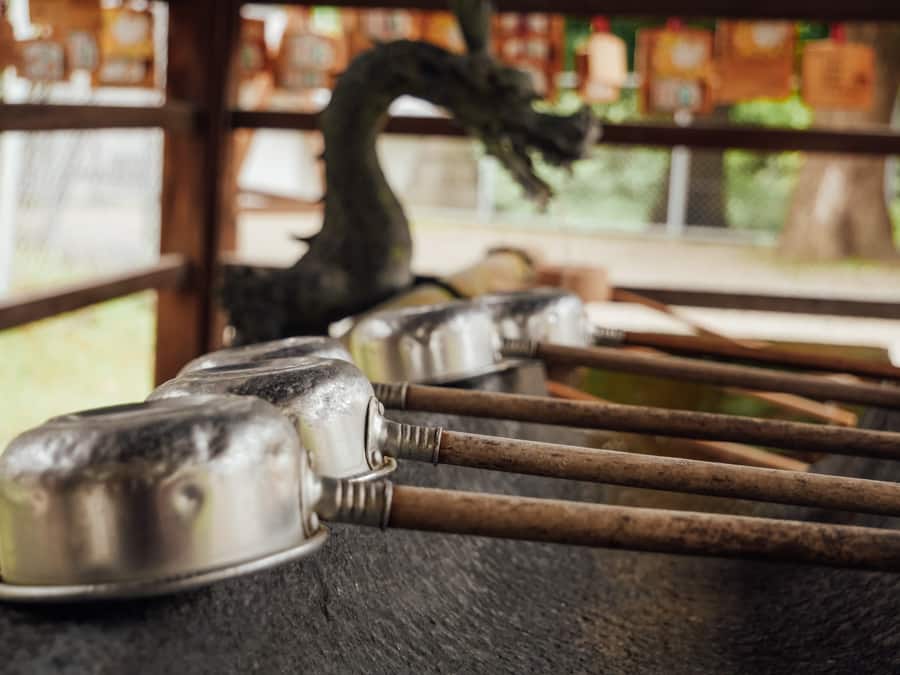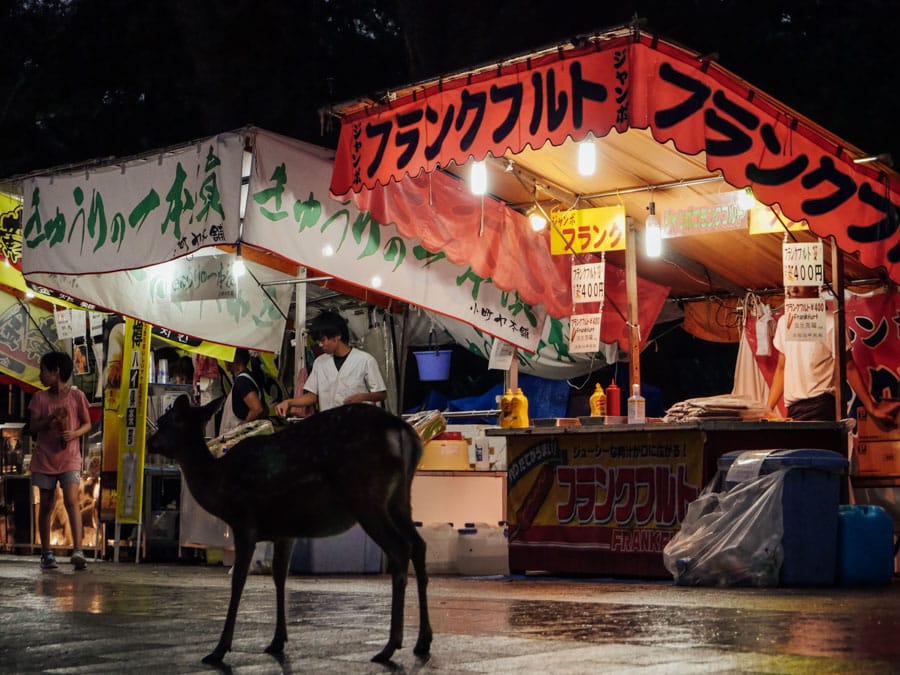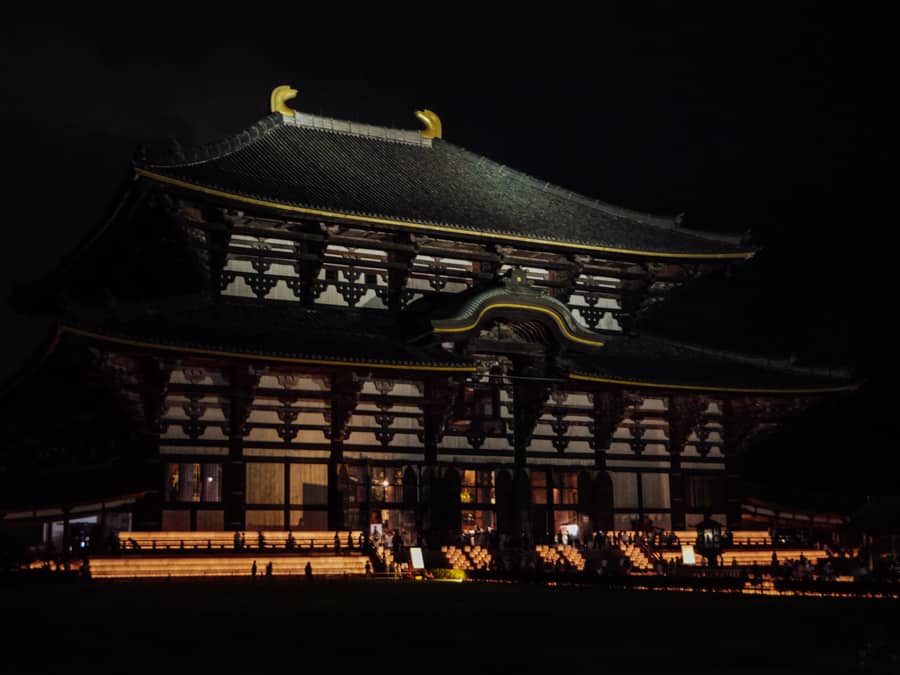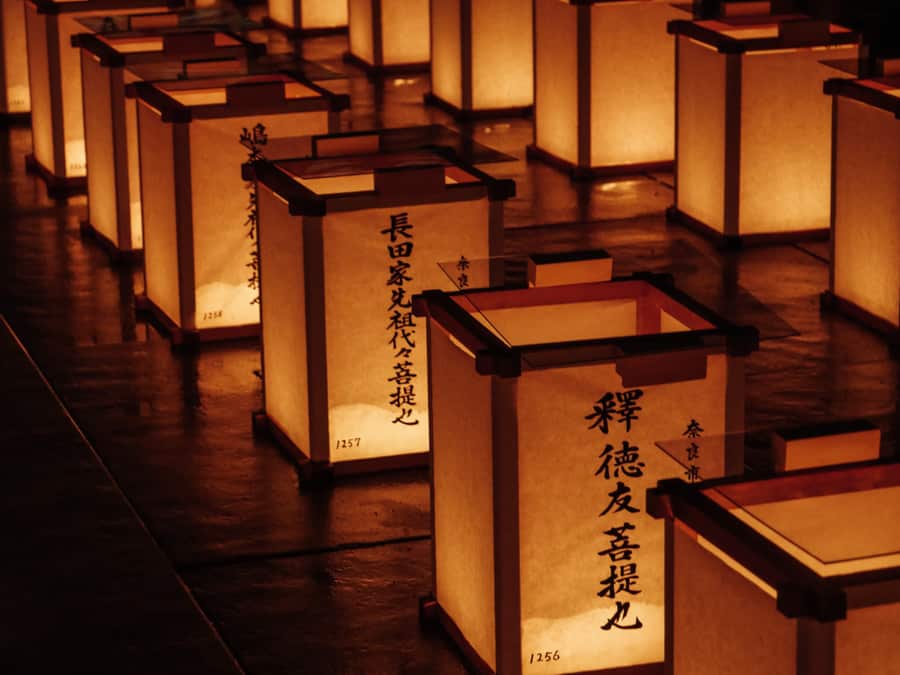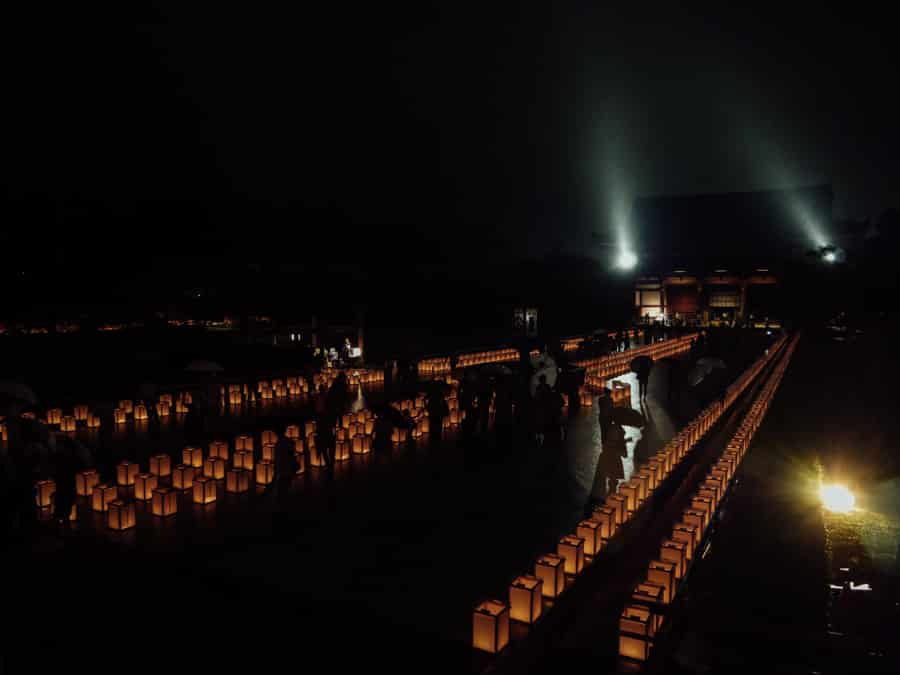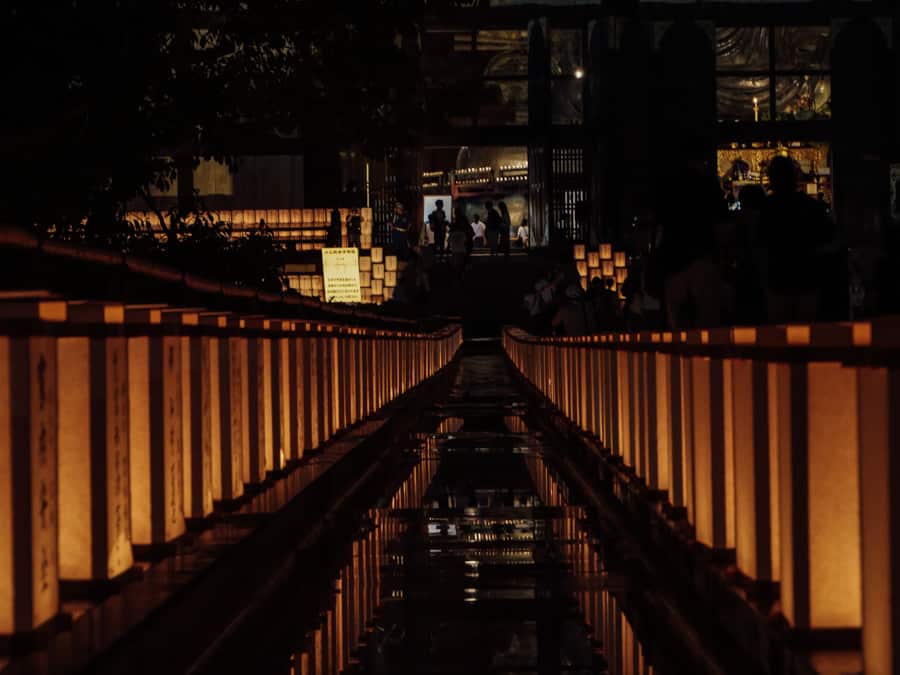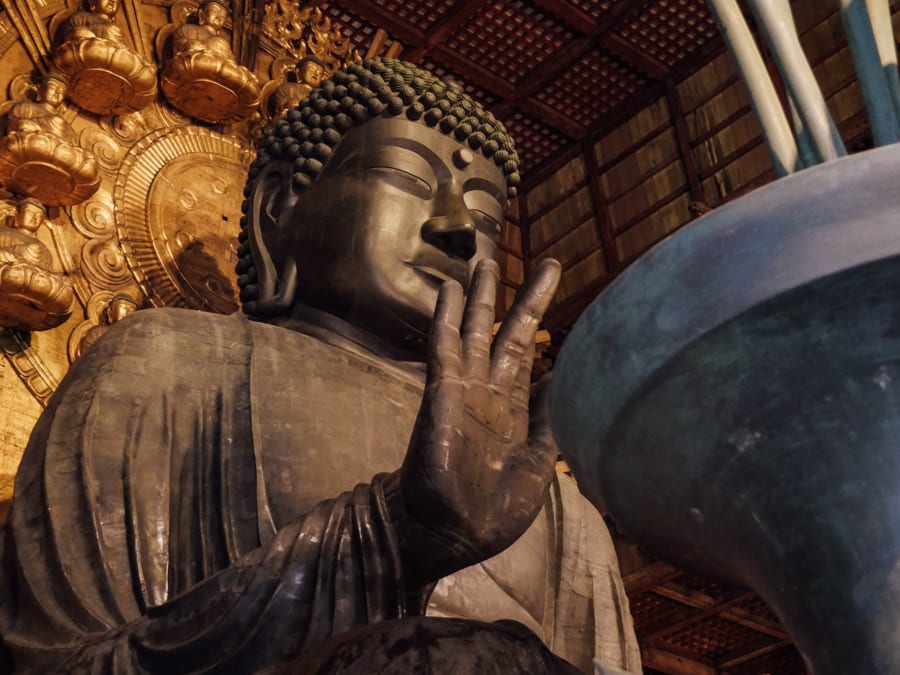Tokyo really won us over with its modern, authentic, crazy feel and unique concepts, but Kyoto is nothing compared to that! This is traditional Japan!
I also invite you to read all our other articles on Japan to help you prepare for your trip:
WHAT TO SEE IN KYOTO, OUR ITINERARY
________________________________
| IMPERIAL PALACE AND FUSHIMU INARI TEMPLE
There’s of course the Imperial Palace (free admission), with its lovely tree-lined inner garden, small bridge and feudal ambience. Go when the cherry trees are in blossom, as the park is huge and ideal for walks and picnics. You’ll find many temples in Kyoto, but we especially like the Golden pavilion ” Kinkaku-ji Temple ” northwest of Kyoto. (entrance from ¥300 to ¥500/p) but also the temple Fushimi Inari with its thousands of Toriis; This sanctuary has 10,000 red totem poles to cross, lined up one behind the other. The view is just incredible, so take the time to wander around and soak up the atmosphere! We advise you to go early in the morning to avoid the horde of tourists. There’s a summit with a breathtaking view of the city, but to be honest we stopped short of the summit as we were running out of time! The walk is redundant but rather pleasant! All temples close at 5pm. Kyoto is the perfect city for strolling through Zen gardens, so we recommend the one at Nanzen-Ji
| ARASHIYAMA
The bamboo forest ofArashiyama (free admission), a very photogenic bamboo grove I had high expectations of this forest and was disappointed to see so many tourists at 11am. It’s a shady spot that welcomes many people in search of coolness! Go early in the morning to enjoy the place! Numerous restaurants and stores line the forest, but you can also buy objects made from bamboo wood on site (in the forest). If it’s raining (which is quite possible in August), head for the International Manga Museum, where you can learn about the birth and evolution of this Japanese art form.
| THE GION DISTRICT
The
Gion with the
Gion corner is a must in Kyoto. It has that crazy, traditional charm that I was looking for when I came to Japan: pretty, intertwining alleyways that hide beautiful ryokan, traditional teahouses with old-fashioned storefronts. There are two streets that are highly prized for their beauty: rue
Sannenzaka and the street
Hanamikoji. Gion is supposed to be the district of the
Maikos (young geisha apprentices) and
Geishas but we didn’t see any in August! You’ll see them early in the morning or in the early evening, when the hordes of tourists haven’t yet arrived. You just have to be patient and not “chase” them away. In this district, you’ll find houses where you can transform yourself into a Maiko. I tried out this unusual experience so
discover the video here.
To know more: twice a year, in spring and autumn, the geishas of the Gion dance to the Pontocho Kaburenjo theater, the river dance, also known as Kamogawa. It’s one of the few opportunities to see Geishas practicing their art. In April, you’ll see the Maikos dancing at the Gion Kaburenjo.
WHERE TO EAT IN KYOTO: OUR BEST ADDRESSES
Kyoto is the kingdom of refined cuisine! This region offers a wide variety of culinary specialities. But where to eat in Kyoto?
At the
Nishiki because on a huge aisle, you’ll find all or virtually all of Kyoto’s cuisine presented in 130 stores: shellfish skewers, meats, mochi, oysters, pastries, ice cream…. a pleasure for the eyes and the taste buds! Discover
hereour tips for eating cheap in Japan.
| LA RUE PONTOCHO
The street Pontocho! By taking the Shuo bridge that we noticed these restaurants on the river side Kamo with attractive terraces on stilts. Entrance is via the small, narrow pontocho pedestrian street (between Sanjo and Shijo streets), lined on both sides by numerous restaurants. But what a crush! You’ll want to get in everywhere, but beware: to earn a table and sit on the little cushions, you’ll often have to pay between ¥800/p to ¥1000/p + a minimum of 1 drink. (Priority is given to diners). You also need to book in advance, as they’re full every night, so it’s hard to come unannounced!
| TESTER LES SPÉCIALITÉS DE KYOTO
Kyoto is full of restaurants, some of which offer you the chance to try kobe meat. This red beef is considered one of the best in the world, so go for it! You’ll also find great places to dine on Shijo Street, the city’s commercial heart, a thoroughfare used by pedestrians and vehicles alike. It was somewhat by chance that we stumbled across a perpendicular of Shijo Street and sampled the Okonomiyaki, a kind of pancake cooked on a hot griddle and topped with various ingredients: cabbage, egg, vegetables, nori seaweed, meat (beef or chicken) all topped with sauce. You can take it to go (it will be sent to you packaged in a small cardboard tray) or eat on the spot, as we did. ! If I tell you Kobe… You can’t go wrong with beef! Renowned the world over, it’s the Rolls Royce of the wagyû (和牛, Japanese beef). What makes it so famous is the “marbling of the meat”, i.e. the fine grooves of fat that run through it. Legend has it that Kobe’s cattle are massaged daily and fed beer! For a taste of Japanese delicatessen, head for the basement of Takashimaya. Last but not least, you’ll find 7/11 and family Mart to buy cheap and rather good food! Small plan to note: if you buy a bento in a supermarket, just before closing time, you’ll find reduced prices on certain boxes to avoid losses and waste, so it’s a good plan!
| HOW TO GET AROUND KYOTO ?
Kyoto is about 2.5 hours from Tokyo by JR. To get around, there’s of course the metro, but to be honest with you, I found it harder to understand than the Tokyo metro, as there are several lines that are more or less well explained. If I had to recommend a practical and easy means of transport, I would advise you to take the bus. There is an unlimited day pass for ¥500/p and other passes that combine metro + bus that you can buy either from the driver or in the metro. The bus generally leaves you closer to the alleys, temples and thoroughfares, so you waste less time in my opinion.
| WHAT TO BRING BACK FROM KYOTO
Kimonos, of course! Whether cotton or silk, expect to pay between ¥40,000 and ¥120,000. You’ll find a multitude of colors in the Gion district. For a day, you can also dress up like Japanese women and wear traditional clothes to stroll around town (¥3,000-4,000/p). There are thrift shops selling inexpensive kimonos and yukatas in the Teramachi and Shinkyogoku galleries. You can also buy umbrellas, tea, beautiful fans, gelatinous soaps scented with matcha or sakura (cherry blossom) to try out in a store on Gion’s main street, as well as pottery, peach alcohol, crockery, designer clothes and other trinkets. Strolling through the Gion district, you’ll find many beautiful old stalls selling beautiful tea sets, crockery and other decorative items. If you head towards Shijo Street, which cuts through Kyoto from east to west, you’ll arrive in the commercial heart of the city. It’s a busy thoroughfare for pedestrians and vehicles alike, and you’ll find plenty of shops along the way. Be careful on the Sannenzaka shopping street, as stores close around 6.30pm.
| QUAND VISITER KYOTO ?
I think Kyoto has a real charm no matter what the season:
– Mid-March to early May is high season (after Golden Week, when Japanese take their vacations, it’s low season).
– Late March-early April is spring, and therefore the cherry blossom season. It’s also a very expensive period in terms of price, and one that fills up quickly in terms of accommodation.
– July and August remain the low-season months, when it’s hot, even very hot and humid! Temperatures oscillate between 30 degrees and 35 degrees.
– November is also a popular month for autumn colors, which create a different landscape.
– Between December and February it’s winter, but it’s also a time I’d love to discover. It snows often, temperatures can be negative, and the temples and gardens must give kyoto a very poetic look!
WHAT TO DO AROUND KYOTO
__________________________
| NARA
Visiter Nara less than an hour from Kyoto and Osaka. This small provincial town is easy to visit and is best known for its deer, which can be seen all over the town, in the gardens and around temples and castles such as Nojo. One day was enough for us to explore, and Nara boasts 8 Unesco World Heritage temples. During the day, we particularly liked the Kofukuji and the Todai Ji at night. In August, the Lantern Festival is held at Todai Ji Temple, an imposing Buddhist temple that is probably the largest ever built in Japan. Hundreds of lanterns are placed on the ground, from the site entrance to the front gates. It’s magical and enchanting, even if it is crowded at dusk!
We advise you to check the dates in advance, either with the tourist office or on the spot when you arrive in Tokyo, as we almost missed it. No one was giving us the same information – it was unbearable! When we were there, it took place on 15/08 from 7pm to 10pm (entry ¥500/p and supplement for night viewing.). Please note that the last train from Nara to Tokyo leaves around 11pm and takes about 1h30 (it’s a local train that stops at all stations). There are also direct trains, but check the departure times when you arrive at the station.
What about you? Have you been seduced by Kyoto? We’ve fallen in love with it and hope to return one day.
Before you leave, I invite you to read all our other articles on Japan to help you prepare for your trip:
If you have any tips or good addresses to share about Kyoto, don’t hesitate to leave us a comment and we’ll update the list.
Please note that as an accredited bespoke travel designer, I offer to accompany you in the creation of your tailor-made trip to Japan and create a personalized itinerary tailored to your needs. Please send me an email at : contact@mademoiselle-voyage.fr
